Green Chemistry Education in the News:
Select a Category
Meet The Beyond Benign Team: A Q&A with Dr. Monica Nyansa
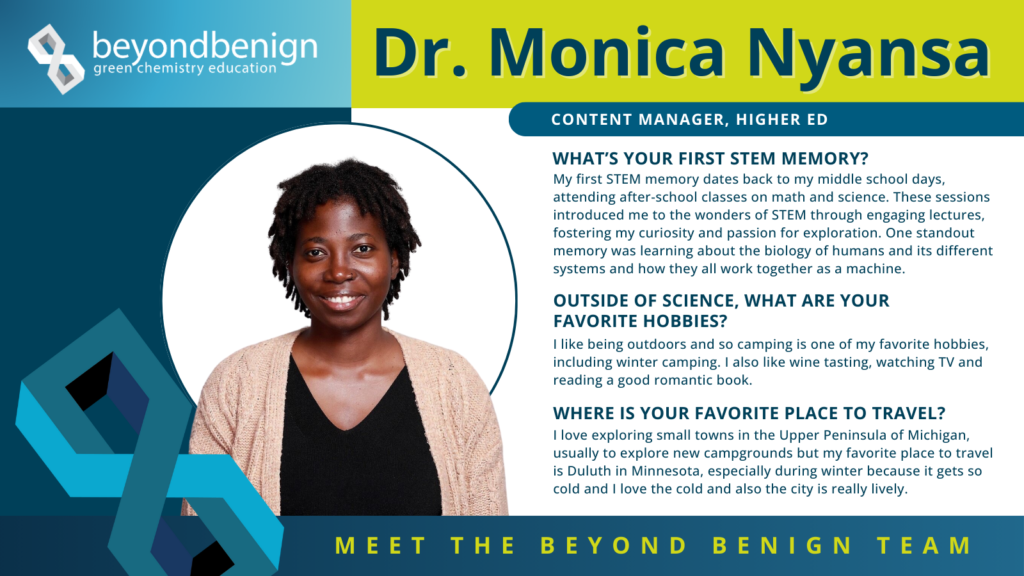
Meet Beyond Benign’s newest team member, Dr. Monica Nyansa! We are proud to welcome Monica to our team as the Content Manager of Beyond Benign’s Higher Education programming.
After graduating from Kwame Nkrumah University of Science and Technology in Ghana with a background in pharmaceutical chemistry, Monica attended the American Chemical Society (ACS) Green Chemistry Summer School, where she developed a passion for sustainability in chemistry.
Monica has since become an active leader in promoting green chemistry education for students and educators. Within the Beyond Benign team, Monica is responsible for leading the design and development of professional development courses that equip educators with the tools and resources they need to teach green chemistry effectively and inspire the next generation of chemists to make positive contributions to society and the environment.
In this conversation, Monica shares her journey to green chemistry journey, her background in pharmaceutical chemistry, her hopes for the future of green chemistry, and the role she sees Beyond Benign playing in advancing the field and promoting a sustainable future for all.
Can you tell us about your journey into the fields of science and green chemistry? What is your educational background, and what organizations have you been associated with?
My journey into science began with earning a bachelor’s degree in pharmacy. Following this, I worked as a pharmacist while pursuing a graduate degree in pharmaceutical chemistry. I became fascinated with molecule design and synthesis, leading me to further my studies with a PhD in Chemistry at Michigan Technological University.
However, my interest in green chemistry was piqued during my PhD program, particularly after attending the ACS Green Chemistry Summer School. This experience sparked my passion for sustainable practices in chemistry. Throughout my doctoral studies, I explored ways to integrate green chemistry principles into my research.
Additionally, I became involved with the ACS Chemical Health and Safety Division, participating in student-led lab safety workshops and interning with the ACS Office of Safety Programs in the summer of 2023. These experiences deepened my understanding of lab safety practices and reinforced my commitment to promoting safer chemistry within the scientific community.
How does your background in pharmaceutical chemistry influence your interest in green chemistry and chemistry education?
During my master’s degree in pharmaceutical chemistry, my research focused on developing a method for simultaneously determining an over-the-counter combination drug. I noticed that many existing methods in the literature relied on hazardous organic polar solvents and had lengthy run times. Motivated to find a safer and more efficient solution, I aimed to develop a method that used less hazardous chemicals and could complete the analysis in a shorter time frame, ideally around five minutes. This approach was important to me as it reduced exposure to harmful chemicals and minimized resource usage.
While I wasn’t yet familiar with the formal principles of green chemistry at that time, the concept of reducing exposure to harmful chemicals and using fewer resources resonated deeply with me. This mindset stayed with me, and when I later learned about green chemistry principles during my PhD studies, I was pleased to see it integrated into the curriculum at Michigan Tech, a Beyond Benign Green Chemistry Commitment (GCC) signer. Having explicit instruction in green chemistry ensures that future chemists are equipped with the knowledge and tools to make positive and relevant contributions to society while prioritizing safety and sustainability in their work.
Can you discuss your experiences in green chemistry education? How do you expect this to influence your work at Beyond Benign?
As far as I can recall, explicit instruction on green chemistry was not part of my undergraduate experience. We frequently handled corrosives and flammables, such as organic solvents, in laboratory coursework, sometimes on open benchtops. Exposure to green chemistry during my graduate education has taught me the importance of sustainability in chemistry. Learning about green chemistry principles, such as minimizing waste and using safer chemicals, has prepared me to promote environmentally friendly practices, especially during my research work.
One thing that I found important in my education was access to resources to learn more about safe and green chemistry and its application. Since explicit instruction of green chemistry applications in the curriculum is critical for educating the next generation of students, this process begins with educators feeling able and confident in teaching green chemistry.
At Beyond Benign, I expect to use this knowledge to develop educational materials that inspire educators to embrace green chemistry, presented in manageable chunks to facilitate incorporation into their existing chemistry curriculum. By providing resources for faculty training in green chemistry concepts and applications and making them accessible, I hope to empower educators to make positive changes in their teaching methods to better prepare students.
As Beyond Benign’s Content Manager, what projects are you currently working on? How do you envision these projects impacting educators and students?
As the content manager, I am working on some exciting projects, mainly aimed at enhancing green chemistry education for students and educators alike. One project involves creating educational content for the professional development of faculty in green chemistry and toxicology concepts. These projects entail working with faculty, usually from institutions that have signed the Green Chemistry Commitment (GCC), to design and develop on-demand training courses. These courses aim to empower educators with the knowledge and skills to confidently incorporate green chemistry into their teaching methods, ultimately enhancing the quality of education for students. (The first step of this project is to gather feedback from the community — we encourage all higher education faculty to fill out our survey so we can hear what their professional education needs are!)
Another ongoing project is a module on how to use the chemical hazard database, ChemForward, for teaching students about hazards and hazard assessment, and finding safer alternatives to hazardous chemicals as a way of ending toxic chemical exposure and promoting safer chemicals.
Overall, I envision these projects making a significant impact on educators and students by fostering a greater understanding of green chemistry principles and promoting sustainable practices in the field of chemistry. By equipping educators with the tools and resources they need to teach green chemistry effectively, we can inspire the next generation of chemists to make positive contributions to society and the environment.
Beyond Benign has a number of opportunities for the education community to get involved in the movement to advance green chemistry education. From your perspective, what are the advantages of peer support and peer-assisted learning?
Peer support and peer-assisted learning are key to advancing green chemistry in education. In a community of practice like the green chemistry community, educators exchange ideas and share experiences, fostering collaboration and innovation in teaching strategies. Each person brings a certain level of expertise and experience to the table, and that is what makes peer support very critical in a community of practice. Knowing that someone is doing what you are also doing or trying to do helps to lower the risks of isolation.
Peer-assisted learning, on the other hand, encourages active engagement and participation, enabling educators to learn from each other and improve their teaching methods. This sense of community enhances motivation and satisfaction in the learning process.
To further support this community, in 2023, Beyond Benign launched the Green Chemistry Teaching and Learning Community (GCTLC), an online platform for the community and by the community to provide a space for learning, connecting, and sharing within the green chemistry community. This platform is critical to advancing the rapidly growing green chemistry teaching and learning community as more institutions start incorporating green chemistry into their curriculum.
What are your hopes for the future of green chemistry in academia and industry?
I envision a future where green chemistry principles are integrated seamlessly into teaching, research, development, and manufacturing processes, leading to cleaner, safer, and more sustainable products and processes.
In academia, I envision a future where green chemistry education and research are prioritized. This entails integrating green chemistry principles directly into chemistry curricula, fostering interdisciplinary collaborations, and offering robust support for green chemistry initiatives and projects. I foresee the next generation of scientists and engineers being equipped with a solid foundation in chemistry viewed through the lens of green chemistry. They will be well-prepared to assume pivotal roles in driving innovation and promoting sustainability across diverse industries and academic disciplines.
In industry, my hope is for the widespread adoption of green chemistry practices and technologies. This entails not only reducing the environmental impact of manufacturing processes and products but also promoting resource efficiency and the use of renewable feedstocks. I hope industries prioritize chemistry that is safe, green, and protects the environment and the climate. By prioritizing these, companies can not only enhance their competitiveness but also contribute positively to society and the planet.
How do you believe organizations like Beyond Benign can contribute to realizing these goals?
Organizations like Beyond Benign play a crucial role in realizing these goals by acting as catalysts for change and facilitating collaboration between academia, industry, and other stakeholders. Beyond Benign provides valuable resources, training programs, and educational materials to support the adoption and implementation of green chemistry principles. Beyond Benign empowers individuals and organizations to embrace sustainable practices and drive positive environmental outcomes by raising awareness, building capacity, and fostering partnerships. Overall, organizations like Beyond Benign can make a significant contribution to advancing the field of green chemistry and promoting a more sustainable future for all.
What advice or insights would you share with educators and students interested in incorporating green chemistry principles into their teaching and research practices?
For educators, you don’t have to reinvent the wheel. Thanks to organizations such as Beyond Benign and the GCTLC platform, there are resources and peer support available. There are numerous ways to incorporate green chemistry into your existing courses, ranging from explicit instruction on green chemistry principles in chemical processes to offering standalone courses dedicated to green chemistry principles and applications. Support is readily available for integrating these concepts, along with assessment materials. Come to one of our Green Chemistry Connections sessions to learn more and connect with your peers. Additionally, support your students who are interested in delving deeper into green chemistry applications. Connect them with resources and champion their education.
For students, seek out peers who share your interests and consider forming a group. Many student-led initiatives in green chemistry, like the University of Toronto Green Chemistry Initiative Team, provide opportunities for involvement.
Maintain your curiosity and passion for learning!
How you can get involved:
- Keep up with Monica and her work by connecting with her in the GCTLC!
- Higher Education Faculty: Help shape the future of professional training in green chemistry and toxicology! Your insights in this 15-minute higher-ed survey will pave the way for tailored educational initiatives in the field. Your feedback makes a big difference.
- K-12 Educators: Treat yourself to personal and professional growth this summer! We’re offering three outstanding professional development courses for K-12 educators taught by Beyond Benign Lead Teachers.

Meet The Beyond Benign Team: A Q&A with Dr. Monica Nyansa
March 26, 2024
Meet Beyond Benign’s newest team member, Dr. Monica Nyansa! We are proud to welcome Monica to our team as the Content Manager of Beyond Benign’s Higher Education programming. After graduating […]
Categories: Green Chemistry Education, Spotlight
Integrating Green Chemistry Into K-12 Classrooms: 3 Educators Paving the Way
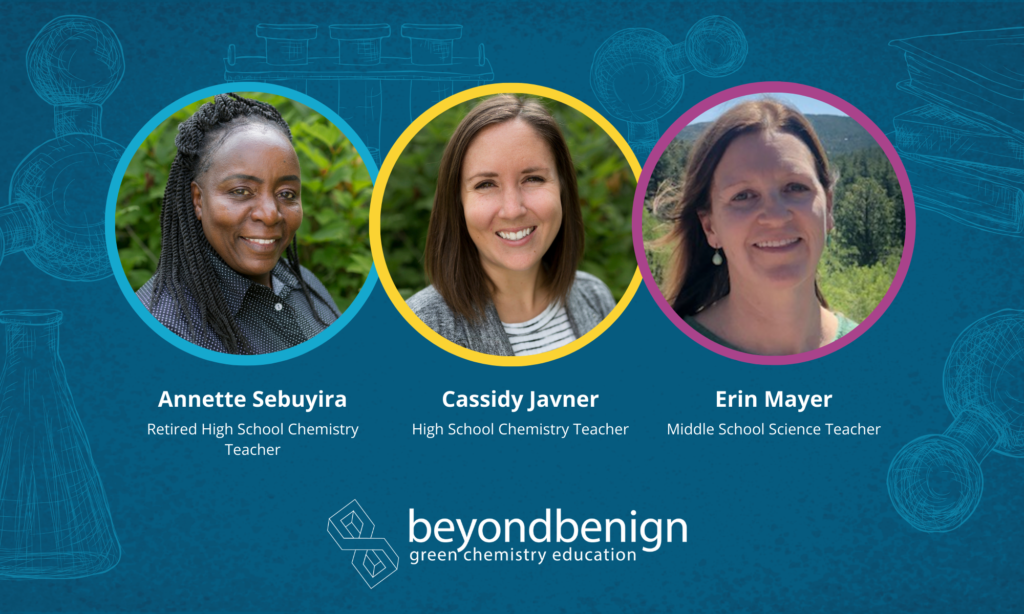
Training future green chemists starts in K-12 classrooms and labs, where the foundational principles of green chemistry are introduced. This early exposure fosters safer learning environments and inspires students to think sustainably about the world around them. Beyond Benign is proud to work with educators to make green chemistry an integral part of chemistry education, and we are continuously impressed by the educators who train and prepare their fellow science teachers to bring green chemistry into their classrooms and labs.
We caught up with three educators who are helping pave the way for a greener future — Cassidy Javner, Erin Mayer, and Annette Sebuyira. This summer, these Beyond Benign Certified Lead Teachers are teaching professional development courses for middle school and high school science teachers at various levels of green chemistry engagement.
Below, Cassidy, Erin, and Annette share their green chemistry backgrounds, what drives their passion for teaching green chemistry, and the value of participating in a professional development course.
Tell us a little bit about you and your background in green chemistry education.
Cassidy Javner: I am a high school chemistry teacher in Minnesota, and I have been teaching chemistry at all levels (General, Honors, and AP) for 11 years. I got connected to green chemistry education through the University of Minnesota Research Experience for Teachers (RET) program in 2016. As a part of the program, I took Beyond Benign’s online course, “Introduction to Green Chemistry in the High School Classroom,” and haven’t looked back since. Now I am a Beyond Benign Certified Lead Teacher and I am teaching the same online course! I have been a part of several American Chemical Society’s Journal of Chemical Education publications about developing and implementing green chemistry with my students. In addition, each summer, I help run a summer workshop on Green Chemistry for High School Teachers in Minnesota. In 2018, our team from the University of Minnesota was awarded the ACS Committee on Environmental Improvement Award for Incorporating Sustainability into Chemistry. I have enjoyed sharing my green chemistry experiences with my students and other educators throughout Minnesota.
Erin Mayer: I teach young scientists at Casey Middle School in Boulder, Colorado. For over 20 years, I’ve helped create safe learning spaces where students can explore and understand the natural world. I challenge them to think critically, ask questions, and find solutions. My goal is to inspire them to tackle local and global issues, making the world a better place. In 2020, I discovered green chemistry through a Beyond Benign online course. Green chemistry is about solving problems in sustainable and eco-friendly ways. This fits perfectly with my aim to empower students to use their scientific knowledge to address real-world problems. To achieve this, I’ve developed various activities, including waste audits, studying handwashing during COVID-19, making eco-friendly products, and incorporating microscale chemistry into our middle school curriculum. These experiences not only teach and emphasize green chemistry principles but also foster innovation and problem-solving skills in my students.
Annette Sebuyira: I have been affiliated with green chemistry since 2013. I first became aware of the practice of green chemistry when I attended a summer training program for teachers at Siena College in New York, run with Beyond Benign. We practiced several labs, where “green chemistry” was a new term to me. They used safer materials. They used household products. They did not use the concentrated nitrates that I was used to using in the lab room, and I was hooked. When I went back to my school that fall, I worked toward reducing hazards by using less toxic materials. If I couldn’t find a replacement, I changed the lab to a micro-scale lab. I wrote to the DEC and asked if they had more resources. They connected me to the Beyond Benign crew, and I reached out to them and said this was something I was looking for, but I didn’t know what it was called, and I really wanted to be immersed in it. That was the beginning.
What can you tell us about your experience teaching Beyond Benign’s professional development courses? How long have you been teaching these courses, and why is this valuable?
Cassidy: During my time as a Lead Teacher at Beyond Benign, I had the opportunity to lead professional development at conferences and workshops throughout the country. This will be my third year teaching the “Introduction to Green Chemistry in the High School Classroom” online course. I find it really valuable to share my green chemistry knowledge and also to learn from the participants at the workshops and courses. I always leave Beyond Benign’s professional development experiences with a plethora of ideas and activities that I want to try in my classroom. Teaching the course renews my own passion for green chemistry and ignites my creativity as a scientist and educator.
Erin: I have facilitated the Beyond Benign “Sustainable Science: Contextualizing Chemistry Through Safer Hands-On Labs” online course for the last two years. The Sustainable Science course provides participants with an overview of the Green Chemistry Principles, introduces participants to the wealth of green chemistry resources available through the Green Chemistry Teaching and Learning Community (GCTLC), and incorporates multiple opportunities to consider how to introduce student learners to the principles as well as how to incorporate the principles into the general classroom setting.
Annette: This will be my second year teaching the “Advanced Green Chemistry: Connections to Our World” summer course. When I went through the course [initially designed by Tanya Elmer], imagining myself as a student, I found myself interested in the materials. It had units, such as designing a lab, introducing toxicology to teachers, and embracing or examining a green chemistry Presidential Award winner project that was going on. It tied in academia, industry, and economics. And I thought, “This is a wonderful course.”
How have you seen attendees grow from the beginning of a professional development course to the end?
Cassidy: Many attendees start the course with little to no green chemistry experience or many attendees have inherited a set of very traditional labs. Throughout the course, participants learn ways to reduce hazards in their laboratory and make their activities safe for their students and the environment. Further, participants are able to explore all of the ways that green chemistry can empower their students with the knowledge and skills to become environmentally conscious individuals in their communities and create a more sustainable future.
Erin: I have worked with educators at different stages of familiarity with green chemistry, from beginners to those already integrating it into their teaching. Upon completion of the course, most participants express feeling inspired and eager to incorporate green chemistry principles and practices into their learning spaces.
Annette: What I look forward to is getting feedback at the end of the academic year from the teachers who created their lesson plans and unit plans and seeing how teachers implemented and how the plans went. I saw teachers grow from saying, “I can’t implement this in my school unless you tell me what to do, and you have to give me the material, and I need the resources from you,” to turning around and being the ones providing their resources and having so many ideas. It is really nice to see that they have internalized it and they’re owning it. And they’re so invested that they even reach out to me now. I like to see their view just expanding right in front of your eyes!
Can you share a memorable experience or project from the course that exemplifies the impact of green chemistry education on attendees?
Cassidy: One of my favorite assignments from the course is where participants design a lesson to introduce their students to the 12 Principles of Green Chemistry and the 20 United Nations Sustainable Development Goals. This past year, participants used an incredible variety of real-world examples to introduce green chemistry to their students, including soap making, egg drop experiment, colorimetry, chemical reactions, glue, road de-icers, bioplastics, household cleaners, polystyrene packing peanuts, cosmetics, biomimicry, plastic pollution, natural dyes, and food storage containers. The creativity that teachers bring to this assignment is incredible and inspiring.
Erin: I recently worked with an educator who was interested in implementing green chemistry principles in her elementary art classroom. It was fascinating and inspiring to follow her green chemistry journey from a very different educational perspective.
Annette: One of the attendees was a veteran chemist, worked in industry, and was in charge of emulsifying paint, whereby they will take the micro globules of paint particles and create what’s called a disperser. Each of those solvents was so highly toxic. She worked with these solvents for 25 years before becoming a high school teacher, where she used the platform of our course to create a unit on paint. And knowing all the topics you have to know in chemistry — solubility, Ph, electrophoresis — she took all these units and tied them into the learning, each of them based on paint. Then she went back to her former company saying, “Listen, this and this are really highly toxic. Why don’t we try something different?” It’s amazing to me. I got this student from being very afraid of being able to do an advanced course in green chemistry and being able to apply it to students, to then be able to embrace it, learn it, and now is teaching others.
What drives your passion for teaching green chemistry?
Cassidy: Green chemistry uses cutting-edge research and addresses relevant environmental issues, including bioplastics, water quality, climate change, renewable energy, medical sutures, road salts, and oil spills. Incorporating these concepts makes chemistry engaging, relevant, and authentic for all students. I am passionate about teaching students chemistry through experiences that minimize waste, increase safety for students and the environment, and teach students about chemistry in a sustainable way.
Erin: My students! I love watching my students become empowered members of the green chemistry community as they apply their chemistry understandings to innovate, invent, and use sustainable and environmentally conscious practices to address problems applicable and relevant to them.
Annette: I think at the end of the day I feel safer that I’ve made one little change that leads us to maybe a healthier, wealthier way to live.
What are your hopes for the future of green chemistry education? How do you believe these courses can contribute to realizing these goals?
Cassidy: My hope is that green chemistry education will be incorporated in all classrooms, with all ages, and with all students. I want green chemistry education to spread to as many teachers as possible. These courses are a great way to expose teachers and, in turn, their students to green chemistry education.
Erin: My hope for the future of green chemistry education is to bring more awareness to the green chemistry movement. I believe Beyond Benign’s courses contribute by providing accessible and engaging resources that introduce participants to the principles and practices of green chemistry. By equipping educators with the knowledge and tools to integrate green chemistry into their teaching practices, we can inspire the next generation of scientists and innovators to prioritize sustainability and environmental responsibility in their work. This increased awareness and understanding of green chemistry can lead to the widespread adoption of eco-friendly practices across various industries, ultimately contributing to a more sustainable future for our planet.
Annette: I am hoping that if teachers take this course, they’ll take away something they can share in their own communities. Just to bring about an awareness that: yes, chemistry is there, and no, chemistry does not have to be the highly toxic environment that we know. Chemistry can sound challenging to people because it presents a lot of hazards. But if you say green chemistry? It sounds softer, and its practices are safer. I changed the final project in the Advanced Green Chemistry course from being someone’s existing research to creating a unit that you can teach. It brings about ownership. It brings about agency, and it brings about the concept that you are definitely going to talk about it later. Whether it’s your students who take it home to their families or their other classes or it’s your colleagues who see you practicing it and ask about it, you’re creating an awareness that wasn’t there before.
What advice or insights would you share with educators interested in incorporating green chemistry principles into their teaching practices?
Cassidy: Start small — find easy, realistic, and manageable changes that you can make to your classes today. Start with replacing hazardous labs and chemicals with alternatives that are safer for you, your students, and the environment. Then find ways to begin to weave real-world applications of green chemistry throughout your entire curriculum. Incorporating green chemistry is a process, and the “Introduction to Green Chemistry for High School Teachers” course will help you get started!
Erin: Start small. Check out the resources on the GCTLC. Focus on intentionally integrating and exposing your students to one or two green chemistry principles. Implementing microscale chemistry to focus on the first Principle of Green Chemistry — prevention is a low-stakes but powerful entry ramp for green chemistry.
Annette: One day at a time. You can’t get it all done at once. I am overzealous and very hyper about implementing green chemistry, and it still took me three years to actually say, “This is a green chemistry classroom.” I have no qualms about any of the practices that I shared with my students and passed on to my incoming colleagues as I retired because I had taken it in and been able to change each of these practices. And I will never stop learning. I never stop reading. I’m always reading either a Biomimicry Institute magazine, Nature, or ACS Green Chemistry Institute publications because there are so many other things that we might be misinformed about, or are not aware of, or know that it’s bad, but we’re still doing it. So, I say, take your time, but each day, make an effort.
Join a Summer Professional Development Course!
Learn more about these online courses and register by June 1st, 2024. Sponsorships are available for select states.
- Introduction to Green Chemistry for High School Science Teachers | High School Teachers | In this course, Beyond Benign Certified Lead Teacher Cassidy Javner will help prepare you to integrate green chemistry principles and practices into your teaching through real-world sustainable inventions. You’ll learn how to develop safer labs and lessons aligned to your local standards in an interactive environment.
- Sustainable Science: Contextualizing Chemistry Through Safer Hands-On Labs | Middle and High School Teachers | Learn how to weave Next Generation Science Standards (NGSS) sustainability content into your classrooms with Beyond Benign Lead Teacher Erin Mayer. Open to middle school and high school teachers, participants will leave with a toolkit of resources and access to a network of other like-minded educators in the region.
- Advanced Green Chemistry: Connections to Our World | High School Teachers | Join Beyond Benign Certified Lead Teacher Annette Sebuyira as you expand your knowledge of green chemistry principles and practices by analyzing Presidential Green Chemistry Challenge Award technologies. In this course, you’ll dive into toxicology for chemistry basics and investigate the pedagogy for effective guidance of student-based research projects and inquiry-based projects.
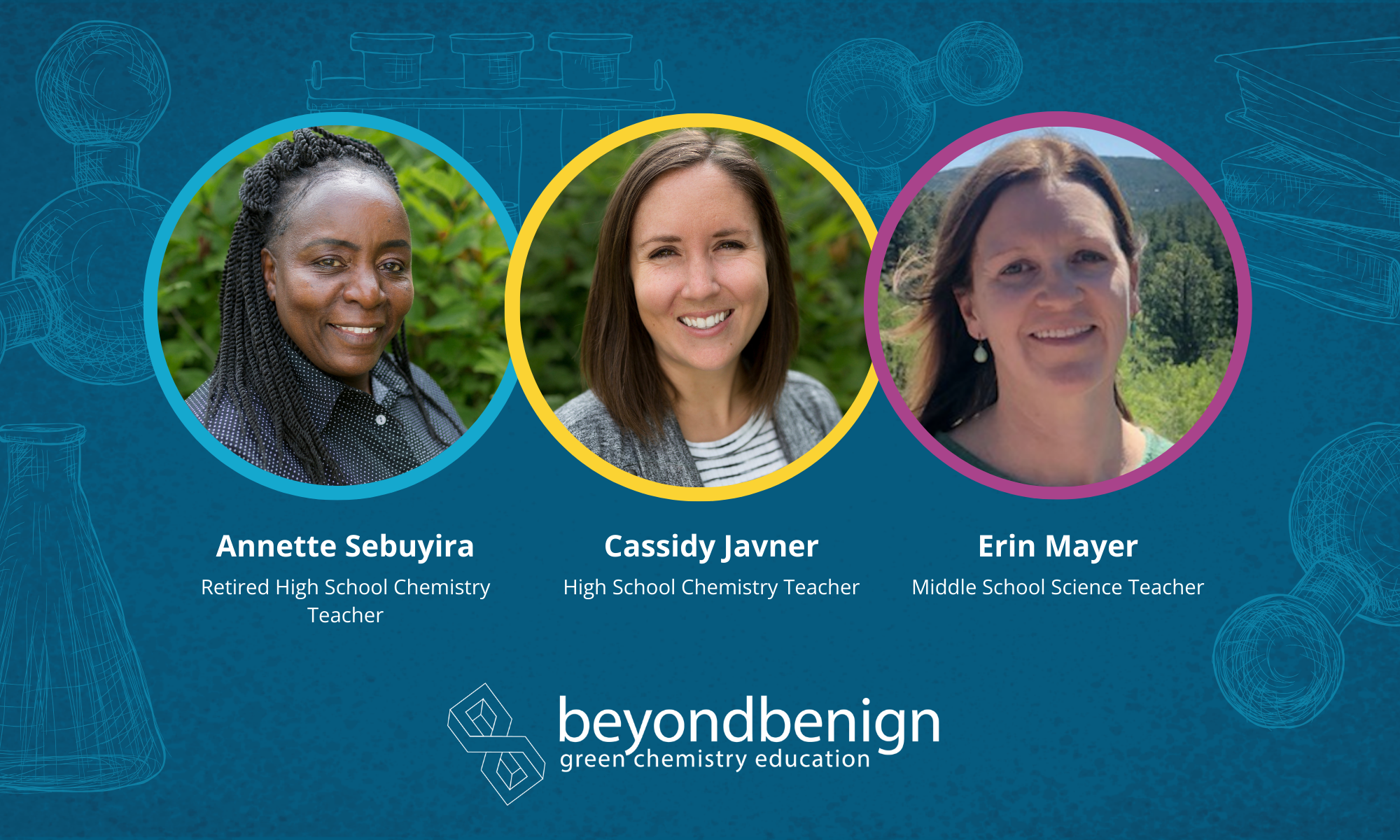
Integrating Green Chemistry Into K-12 Classrooms: 3 Educators Paving the Way
March 26, 2024
Training future green chemists starts in K-12 classrooms and labs, where the foundational principles of green chemistry are introduced. This early exposure fosters safer learning environments and inspires students to […]
Categories: Green Chemistry Education, K-12
Chemistry Visionaries: A Leadership Conversation on the Future of Green & Sustainable Chemistry

In the ever-evolving landscape of green and sustainable chemistry, three distinguished organizations — the American Chemical Society Green Chemistry Institute (ACS GCI), Beyond Benign, and Change Chemistry — are working collectively to steer the industry toward a more sustainable and environmentally conscious future. In the following conversation, visionary leaders from each of these organizations — Jenny MacKellar from Change Chemistry, Adelina Voutchkova-Kostal from ACS GCI, and Amy Cannon from Beyond Benign — discuss the remarkable progress, challenges, and strategic initiatives undertaken in the past year, and where they see green and sustainable chemistry progressing in the years ahead.
Jenny MacKellar, Change Chemistry: Change Chemistry is a coalition of 100+ industry leaders committed to driving the adoption of safer and sustainable chemistries globally. Jenny MacKellar is the coordinator of Change Chemistry’s diverse member offerings, overseeing programs, workgroups, and events. With a background in systems biology and public health, she previously spent nine years at the ACS GCI and has experience in U.S. government agencies, emphasizing science communication, policy, grant management, and IT solutions.
Adelina Voutchkova-Kostal, ACS GCI: The ACS’s flagship Green Chemistry Institute convenes the global chemistry community to catalyze innovative thinking, facilitate critical conversations, and communicate the core values and benefits of green and sustainable chemistry and engineering. Adelina Voutchkova, Director of Sustainable Development at the ACS, leads the ACS GCI and has extensive research experience in green synthetic methods and predictive toxicology.
Amy Cannon, Beyond Benign: Beyond Benign empowers educators to bring green chemistry to their teaching and practice. Amy Cannon, the recipient of the world’s first Ph.D. in Green Chemistry, is a pioneering force in advancing sustainability within the field. From co-founding Beyond Benign in 2007 to earning accolades for research and leadership, Amy remains dedicated to transforming education systems to equip scientists with essential green chemistry skills for sustainable chemical solutions.
Join us in this enlightening dialogue as these three leaders discuss their organizations’ unique contributions, collaborative endeavors, and their collective journey toward a sustainable and inclusive future.
Each of your organizations works uniquely in the chemistry space to promote green and sustainable chemistry at institutional and industrial levels. Could you share some highlights from the past year that indicate progress in this direction?
Jenny: From our perspective, two notable trends stand out. Firstly, there is unprecedented policy support through significant legislation like the Infrastructure Law, the Inflation Reduction Act, and the Sustainable Chemistry R&D Act. These laws not only allocate substantial funding for green and sustainable chemistry innovations but also emphasize environmental justice, encouraging holistic problem-solving.
 Secondly, we are seeing the finance community prioritizing green and sustainable chemistry. Companies now face reputational risks if they do not prioritize green and sustainable chemistry practices as part of their business strategies. This shift in perspective is pressuring even major chemical companies to align with and prioritize sustainable chemistry practices.
Secondly, we are seeing the finance community prioritizing green and sustainable chemistry. Companies now face reputational risks if they do not prioritize green and sustainable chemistry practices as part of their business strategies. This shift in perspective is pressuring even major chemical companies to align with and prioritize sustainable chemistry practices.
Adelina: In the industry sector, there’s a notable increase in interest and engagement in pre-competitive collaboration facilitated by the ACS GCI. Industry groups collaborate through roundtables to overcome research and development challenges that lead to a reduction of the environmental and health impact of their operations.
On the education front, educators are showing a growing appetite for a green chemistry curriculum. On the science and innovation side, ACS journals that serve green chemistry and engineering are growing in prominence. Initiatives such as the Green Chemistry Challenge awards further highlight the collaborative efforts in pushing the green chemistry agenda.
Amy: The past year has been super exciting, marking a broader recognition of green chemistry as a means to achieve sustainability goals. In the education sector, the rate of new signatories to the Green Chemistry Commitment nearly tripled, indicating significant acceptance and growth. And, we also launched a new community platform to support the global green chemistry education community, the Green Chemistry Teaching and Learning Community (GCTLC).
 The updated ACS guidelines for bachelor’s degree programs now consider green chemistry a critical requirement and a normal expectation, emphasizing its importance in the curriculum. While it may not be the norm yet, there is a clear expectation that green chemistry should be integrated meaningfully into higher education curriculum. Industry is also recognizing the benefits of green chemistry skills in the workplace, adding to the overall positive momentum.
The updated ACS guidelines for bachelor’s degree programs now consider green chemistry a critical requirement and a normal expectation, emphasizing its importance in the curriculum. While it may not be the norm yet, there is a clear expectation that green chemistry should be integrated meaningfully into higher education curriculum. Industry is also recognizing the benefits of green chemistry skills in the workplace, adding to the overall positive momentum.
What are some of the barriers your communities are facing as they work to make green and sustainable chemistry more widely adopted?
Amy: I usually don’t talk about barriers because I find it limiting; I see them more as opportunities. However, within the education sector, the challenges of integrating green chemistry are not unique to this field but rather stem from the broader difficulties of changing established curricula. Adapting teaching practices and altering routines ingrained for years is a universal challenge requiring time, resources, community support, and financial investment. It’s crucial to view these obstacles not as hindrances specific to green chemistry but as opportunities to understand the complexities of implementing change. While some barriers, like misconceptions about green chemistry, may be unique, their prevalence is decreasing with the growing body of evidence showcasing the benefits of sustainable practices.
Adelina: I echo Amy’s perspective on viewing challenges as opportunities. The current heightened public awareness of sustainability provides a timely opportunity. Leveraging this awareness, we can emphasize the role of chemists in bridging innovation gaps to minimize environmental impact. This presents a chance to inspire students, researchers, and companies about their respective roles in contributing to sustainable development. The ACS GCI plays a unique role in communicating these actions, using its platform to highlight chemists as agents of positive change.
 One approach for that is leveraging the ACS’s broad reach to inspire chemists about the broader application of their research. The GCI looks to showcase not only fundamental research but also its real-world applications in solving sustainability challenges. In the long term, we plan to engage the global community with campaigns that communicate the vital role of chemistry in addressing sustainability challenges.
One approach for that is leveraging the ACS’s broad reach to inspire chemists about the broader application of their research. The GCI looks to showcase not only fundamental research but also its real-world applications in solving sustainability challenges. In the long term, we plan to engage the global community with campaigns that communicate the vital role of chemistry in addressing sustainability challenges.
Jenny: I agree with Adelina and Amy. One significant concern is the lack of consistency around metrics for measuring sustainable chemistry attributes. There has been significant work over the years to determine how we measure progress towards safer chemicals, but we have a long way to go in creating similar metrics for sustainable chemicals. Clear metrics aid communication between customers and suppliers during the production of products, but also with the public and investors, and support educational transformations providing a comprehensive narrative of the community’s objectives. Developing metrics for green and sustainable chemistry is a tough task, and efforts like the ACS GCI Pharmaceutical Roundtable are working hard to establish clear standards, reflecting the broader industry trend toward reporting progress.
What do chemistry educators and students need from industry and policy leaders in order to prepare the next generation of green and sustainable chemists more successfully?
Amy: That’s a great question. I believe we need stronger bridges to industry, with a clearer articulation of their needs. Industry should express the specific skills they require, allowing educators to better tailor training for the next generation. The ACS has provided leadership through guidelines emphasizing green chemistry, and it will be interesting to see if this momentum continues. Moreover, industry needs to align its actions with expressed needs by actively seeking and hiring individuals with green chemistry skills.
Jenny: I love this conversation, and having worked with Amy and Adelina for so many years, education is obviously near and dear to my heart.
To enhance education, we are in the process of developing a survey to better understand the upskilling needs of our current workforce. This would help us bridge the gap between what industry needs and how we train future scientists. On the policy side, we’re focused on ensuring that current funding opportunities support innovation and green and sustainable chemistry. We aim to harness these opportunities to align with the principles of green chemistry, ensuring that the policies in place translate into meaningful funding opportunities. Additionally, we’re working on communicating the importance of green and sustainable chemistry to policymakers, emphasizing its connection to bipartisan topics like job creation.
Adelina: The ACS GCI is evolving its engagement in policy, collaborating closely with the ACS Government Affairs Office. We aim to be strategic partners to organizations like Beyond Benign and Change Chemistry in elevating the agenda for sustainable chemistry. While the passage of the Sustainable Chemistry Act was a significant milestone, many challenges remain. The GCI is working to communicate the need to position the chemical research and industrial enterprise to help achieve the UN Sustainable Development Goals. This requires the identification of innovation gaps, recognizing supply chain demands of industry, and the policy that will be needed to encourage the adoption of new chemistries. Recognizing that our organizations are all parts of a larger ecosystem underscores that collaboration with such strategic partners is crucial for affecting the change we advocate for.
Jenny, at an industrial level, where are you seeing the biggest opportunities for advancement in green and sustainable chemistry right now?
Jenny: There are so many opportunities, but we always focus on areas with the potential for the most significant impact. We are trying to understand which systematic levers need to be pulled to drive the transition and scale of safer and more sustainable chemicals in the market. It’s important to demonstrate how green and sustainable chemistry practices can help companies achieve their broader sustainability goals. For example, many of the aspirational goals laid out in the UN SDGs are urgent issues, especially for the next generation. Articulating how green and sustainable chemistry can play a supporting role in addressing grand global challenges is critical to making sure that these practices become core to setting business strategies. Policy changes, financial shifts, and altering consumer mindsets are all part of a comprehensive approach needed to drive the industry in a sustainable direction. Education and systemic changes are also crucial, considering the unparalleled support required for the transition to the next phase of the chemical industry.
Amy: I think it’s an interesting time with significant opportunities aligning with the UN Sustainable Development Goals. These goals, addressing environmental and social justice challenges, are grand challenges that either require chemistry innovation as a central part of the solution, or should be embedded in how we practice chemistry. While not specific to particular industries, these challenges are global and local, providing a broader perspective.
Adelina: I agree, the UN Sustainable Development Goals are a critical framework connecting green chemistry and engineering impacts globally. We’re actively working to connect research to these goals, ensuring our work positively impacts lives, communities, and ecosystems. We recently collaborated with the Moore Foundation to identify underfunded areas in fundamental chemistry that have a high potential to impact UN SDGs. We hope to encourage funding in these important areas and help researchers make connections between the fundamental advances that stem from their work and potential applications, bridging the gap between fundamental research and practical applications. It’s a long-term project, but an essential one.
Speaking of research, Adelina, the connection between chemists at academic and industrial levels seems crucial for the advancement of green and sustainable chemistry. Where are you seeing success in these connections, and where are there still opportunities for growth?
Adelina: We’ve found success in initiatives like the GCI Industry Roundtables, which provide financial support to researchers who seek to address industrially relevant challenges and foster ongoing collaboration. We have also introduced a new sustainability grant program, supported by the ACS Campaign for a Sustainable Future, which assists early-career and mid-career researchers in connecting their work to industrial applications. We are also developing more opportunities for mid-career researchers to engage with industry during the fundamental research phase.
 Looking ahead, our vision involves creating a broader industry-academia nexus, a theme that will shape many GCI initiatives over the next few years. Based on my own experience in academic research, I see this as an area of tremendous potential. There are opportunities for the ACS to serve a critical role in integrating these two communities and sparking long-term connections, as opposed to just short-term collaborations.
Looking ahead, our vision involves creating a broader industry-academia nexus, a theme that will shape many GCI initiatives over the next few years. Based on my own experience in academic research, I see this as an area of tremendous potential. There are opportunities for the ACS to serve a critical role in integrating these two communities and sparking long-term connections, as opposed to just short-term collaborations.
A new platform called Green Chemistry for Sustainability, developed in collaboration with the Yale Center for Green Chemistry and Green Engineering and Beyond Benign, will play a key role in integrating sectors and facilitating connections.
Amy: The collaboration between academic and industrial professionals is crucial. One challenge we’ve recognized is the need for technical expertise in new content areas, which is vital for sustainability. Industry professionals often possess this expertise, making collaboration beneficial. We’ve been successful in pairing professionals with academics to build case studies and educational resources based on real-world industrial examples, providing contextual and holistic perspectives in education. This approach aims to bridge the gap between academia and industry, a significant area of opportunity that we’re actively exploring to enhance relevance in education.
Jenny: I love the direction Amy is taking. We’re exploring ways to make our numerous case studies more accessible for educational settings. Collaborating with academic institutions is a priority, and we’re revisiting past Green Chemistry Challenge Award winners to assess their impact and provide valuable insights. Additionally, we’re keen on working closely with tech transfer offices to identify and support green and sustainable chemistry technologies at earlier stages, helping startups navigate challenges and ensuring they receive the necessary support. It’s an exciting opportunity to contribute to the growth of early-stage companies and address some of the significant challenges in the green and sustainable chemistry space.
Environmental justice is an important topic for each of your organizations. Can you tell me about your plans to foster the advancement of environmental justice in the next year or two?
Amy: In our interactions with academic institutions through the green chemistry program and community-building efforts, we’re focused on integrating both internal Diversity, Equity, Belonging, and Respect (DEBR) policies and external plans into our programming. We aim for these efforts to be impactful and genuinely engaging for individuals and institutions. Our green campus recruitment program includes a Minority Serving Institutions (MSI) initiative, emphasizing the need for intentional representation in our growing green chemistry community. We have dedicated programs and funds to engage with MSIs.
 Addressing environmental justice requires a holistic approach, understanding the impacts of our trade at multiple levels. This involves considering historical and current implications, recognizing the real impacts of our actions, and exploring ways to improve. Embracing a systems thinking perspective is crucial, moving beyond silos and acknowledging broader impacts. We aim to weave these considerations into curriculum development and program approaches, with specific, detailed plans for engaging with various institutions. Our focus is on meaningful engagement, support, and elevation, aiming for a direction where chemistry is beneficial to all and not exclusive. While these plans are broad, they represent the beginning of our initiatives at Beyond Benign, with many more opportunities to explore.
Addressing environmental justice requires a holistic approach, understanding the impacts of our trade at multiple levels. This involves considering historical and current implications, recognizing the real impacts of our actions, and exploring ways to improve. Embracing a systems thinking perspective is crucial, moving beyond silos and acknowledging broader impacts. We aim to weave these considerations into curriculum development and program approaches, with specific, detailed plans for engaging with various institutions. Our focus is on meaningful engagement, support, and elevation, aiming for a direction where chemistry is beneficial to all and not exclusive. While these plans are broad, they represent the beginning of our initiatives at Beyond Benign, with many more opportunities to explore.
Adelina: We’ve recently elevated environmental justice to a strategic priority at GCI, forging collaborations with the US EPA, specifically the Office of Pollution Prevention and Toxics. In this partnership, we delve into existing data from the EPA Toxic Registry Inventory to identify opportunities to implement green chemistry practices to curb pollution.
We recognize the potential impact of local green chemistry solutions, even if they may not result in high-profile journal publications. To facilitate this, we are developing a platform to connect individuals across sectors, fostering mentorship for community efforts. This extends to chemists partnering with organizations for meaningful broader outreach—a crucial element in federally funded grants. We believe that ACS and green chemistry can play a pivotal role in identifying opportunities for researchers to make a positive impact on communities.
Our collaborative efforts extend to sessions at GC&E and ACS National Meetings. We’re enthusiastic about this new portfolio at GCI, and looking forward to seeing the productivity it brings in the coming year.
Jenny: It’s really exciting to witness the growing prominence of environmental justice in the agendas of our organizations, garnering significant interest and support from various quarters, including the federal government. This represents an unprecedented moment. 
Recognizing the distinct spheres of green chemistry and environmental justice, we are working to support the development of a framework that aims to help organizations identify areas where their green and sustainable chemistry practices align with addressing environmental justice issues across the lifecycle. This includes the creation of case studies featuring companies in various stages, illustrating success and areas for improvement.
Environmental justice remains a nuanced and sensitive topic, with companies navigating the early stages. The conversation seeks to spotlight restorative efforts, acknowledging past challenges and fostering a positive shift in the chemistry narrative. While there are still ongoing discussions and the community is in the early stages of understanding and supporting this endeavor, there’s a noticeable increase in enthusiasm and openness compared to even five years ago.
Any final thoughts?
Amy: In reflecting on our collective efforts, it’s notable that these three US-based organizations share similar timelines. Our commitments to advancing the field of green and sustainable chemistry date back to the late ’90s and early 2000s, and we’ve consistently strived to propel the industry forward through the work of each of our organizations.
Collaborating with both of your organizations is so rewarding, and the continuous exploration of ways to collaborate is beneficial for the entire global community. As just three organizations within this expansive network, the potential for collaboration is immense.
Being side by side with incredible women on this journey is inspiring. Although there’s still a considerable distance to cover, the progress made collectively, not only by us but also by countless others in the community, is noteworthy. It’s an exciting time, and there’s a sense of anticipation for what lies ahead.

Chemistry Visionaries: A Leadership Conversation on the Future of Green & Sustainable Chemistry
February 21, 2024
In the ever-evolving landscape of green and sustainable chemistry, three distinguished organizations — the American Chemical Society Green Chemistry Institute (ACS GCI), Beyond Benign, and Change Chemistry — are working […]
Categories: Green Chemistry Education
The Promise of Green Chemistry: A TEDx Talk by Dr. Amy Cannon
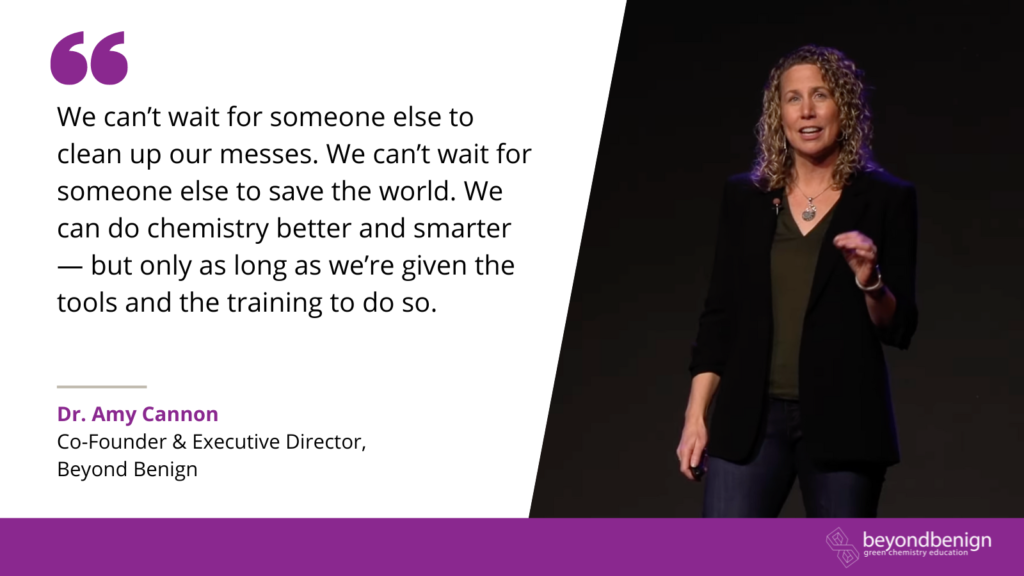
In her TEDx Talk, “The Promise of Green Chemistry,” Beyond Benign Co-Founder and Executive Director Dr. Amy Cannon inspires calls for a paradigm shift in chemistry education to focus on reducing or eliminating substances hazardous to environmental and human health. “We can’t wait for someone else to clean up our messes,” Amy says. “We can’t wait for someone else to save the world. We can do chemistry better and smarter, but only as long as we’re given the tools and the training to do so.”
Drawing from her extensive background, including holding the world’s first Ph.D. in green chemistry, Amy emphasizes the importance of training chemists to be mindful of their work’s broader human and environmental impacts. “Chemistry can solve problems, and it can prevent future problems from occurring,” Amy says. “But only if we intentionally approach our chemistry through thoughtful, proactive design.”
Throughout the talk, Amy inspires us to view green chemistry as a fundamental part of how we teach and practice green chemistry. “Chemistry is essential. It makes up the molecular building blocks of the products that we use every day. It’s all around us and part of us,” she says. “We need to ensure that chemists are trained to create those building blocks sustainably.”
This talk was part of TEDxAmoskeagMillyard’s 2023 event “Here and Now” at the Rex Theatre in Manchester, New Hampshire. Watch the talk to learn about Amy’s green chemistry journey, why chemistry is a logical career path for creating change, and the importance of embedding green chemistry into chemistry education.
Watch the Talk:
Read the Transcript:
When I was a freshman in high school, I participated in an Earth Day fair at my school here in Goffstown, New Hampshire. The topic that I chose to learn about was ozone depletion. The year was around 1990, and scientists had only recently discovered that the ozone layer that protects our Earth from harmful UV rays was thinning, and there was an alarmingly large hole being developed over the Antarctic. This hole and the thinning were being caused by a certain class of chemicals called chlorofluorocarbons, or CFCs, as you may know them. And as I was learning about this, I remember feeling a sense of alarm and a sense of urgency. Alarm that there were actually chemicals and products that were capable of doing this type of destruction to the environment and urgency that something needed to be done about it. My friends and I put together an information booth to share what we have learned with the community. And I was actually even quoted in the local newspaper, the “Manchester Union Leader.” And I remember that there was no more important challenge to tackle — I’m sure you’re somewhat familiar with that sort of passion that youth might have. I wanted to save the world. But at 15 years old, I didn’t really know what that meant. And I wasn’t really sure how to contribute to these sorts of global challenges.
Like many teenagers, I had a lot of different passions growing up. In addition to sustainability, I also had a passion for athletics. And although these two may seem different, they were really essential in my career path. Upon graduation from high school, I was recruited to play division II basketball for St. Anselm College here in Manchester. St. Anselm, when it came time to choose majors, they didn’t have an environmental science major at the time, which is what I would have chosen due to my passion. So I decided I would major in a core science, and then I’d specialize later. So, I was left between chemistry and biology. And I ended up choosing chemistry because I had a wonderful high school chemistry teacher, Mrs. Lessard. She made it engaging and fun, and I ended up being somewhat decent at it, too. You know, thinking back, had I chosen another sport to play, had I attended another college that did have that environmental science major, I wouldn’t have had that foundation in chemistry, which turned out to be essential. So there I was, playing basketball and juggling a chemistry degree major, and I started to learn about the basics of chemistry. I learned about the chemical and physical properties of chemicals. I learned how to draw and name them. I learned about the periodic table and the different properties of the elements. I learned about chemical reactions and how to make some basic structures. I learned about analytical chemistry, which is basically detecting and studying chemicals in a variety of settings, including in the environment. And that’s exactly how I thought I was going to use my chemistry degree. My perception, at the time, was that the field of chemistry just really wasn’t very sustainable, and it was actually a huge part of the problem. But I thought I could use my chemistry skills to study problems and tell the world about them.
So, after graduation, I did an industrial internship, and I felt I wasn’t quite where I wanted to be and I wasn’t being true to my 15-year-old self that wanted to save the world. So I applied to graduate schools, and I was admitted to a program at the University of Massachusetts in Boston called ECOS — Environmental, Coastal, and Ocean Sciences. I started to take classes to learn about the environmental sciences and start to specialize like I thought. At the same time that I was taking those classes, I was assigned an advisor from the chemistry department due to my chemistry background: Dr. John Warner. John Warner was a young chemist and an inventor who had just left an industrial career inventing for Polaroid, the instant photography company. And I started to learn about his work. A year prior to me joining the university, he had just published a book called “Green Chemistry Theory and Practice.” I had never heard about this before. But he was among a handful of chemists that were starting to work towards making the field of chemistry more sustainable, and his work was exciting. He was creating new types of solar energy devices that use a lot less energy in the process of making them. He was creating new types of plastics that were not only a lot less toxic but also recyclable or biodegradable. He was creating new medicines that used a fraction of the active ingredient in order to be effective, but also were safe in how they were made. And what I realized is in my courses, I was learning about the downstream effects of the problem. For example, how pollution and chemicals impact our oceans and our ecosystems. But here was John focusing upstream on creating and ultimately inventing solutions.
Up until that point, I thought I’d be studying problems. I hadn’t realized I could actually use my chemistry degree to solve problems. So this got me wondering, why do we even have environmental problems in the first place? Why do we have products that cause cancer? Why do we have ozone-depleting chemicals? So, let’s take that example of the chlorofluorocarbons that I studied at my Earth Day fair years ago. How did they even get developed? What were scientists possibly thinking? Turns out that scientists were actually trying to solve a problem. And the problem was that the first generation of refrigerants, which is the main use of chlorofluorocarbons, those first generation of refrigerants, were a class of chemicals that were mostly gases that were either highly toxic or explosive. So those early refrigerators in the early 1900s, If there was a pinhole leak in that unit, and it leaked out into a home, it could result in families dying due to the toxicity of the gas. Or if there was a spark created, then refrigerators were actually known to explode. Could you possibly imagine having a refrigerator that could kill or explode? There was a clear problem that needed a solution. So scientists set out to create a nontoxic and stable solution to address those toxicity and explosive issues. And that’s exactly what they got in chlorofluorocarbons. CFCs are indeed non-toxic, so if there’s that pinhole leak, families won’t die. And they’re also not going to explode due to the stability of the gases. But in fact, they are so stable that when they’re released into the atmosphere, they remain intact all the way to the layer of our atmosphere where the stratosphere sits, and our ozone layer, where powerful UV lights hits them and breaks off a chlorine atom that does catalytic destruction to our ozone layer, basically busting a big hole in that layer. So, scientists ended up solving one problem and inadvertently created another. These types of unintended consequences in the field of chemistry are super common. We make some really great products with some really nasty side effects. I’m sure you can think of a number of them off the top of your head, from leaded gasoline and lead paint to now plastics that are building up in our oceans, we have a long history of unintended consequences. And we have a lot of chemicals in our society. In the US alone, we have over 80,000 chemicals in commerce today, with 2,500 of them being produced at a rate of more than 1 million pounds annually. Seven new chemicals are introduced into the market each day, resulting in over 2,000 new chemicals each year. How could we possibly ensure that each and every one of them are safe for humans in the environment? How can we avoid that next unintended consequence? The best way to avoid an unintended consequence is to anticipate it. By understanding what makes a molecule toxic to humans and the environment, it can give us tremendous control to design chemicals and products with reduced hazards and impacts. That statement might sound obvious — that chemists should understand what makes a molecule toxic or potentially destructive to the environment — but in the 90s and the 2000s during my studies, this knowledge was completely void from chemistry degree programs.
Yet here was John Warner, very intentionally focusing on the chemistry he was doing. And I realized that I found myself at the beginning of a movement — a movement where chemists were starting to think about creating products and chemicals very intentionally benign by design. And for the first time in my studies, I saw the true power of chemistry. And there was a shift from chemistry as the problem to chemistry as the solution. So, I was inspired and I changed back to being a chemistry major. I finished my Master’s in chemistry, and then I worked alongside John to create the world’s first Ph.D. program in green chemistry to start addressing these gaps. In 2005, I was the first graduate from this program, and I was among a small but growing number of chemists with green chemistry training. And at that time, and still largely true today, the majority of chemists were not and are not trained in green chemistry. Chemists are not trained to consider the impacts of the chemistry they use or the chemistry they create. So, it’s no wonder why we see unintended consequences. And this is exactly why I’ve dedicated my career to addressing this gap. I founded a nonprofit organization called “Beyond Benign,” where our mission is to empower elementary to university educators to transform chemistry education. We focus on educators so that scientists receive the training they need and citizens can make better decisions.
Chemistry is essential. It makes up the molecular building blocks of the products that we use every day. It’s all around us, and it’s part of us. We need to ensure that chemists are trained to create those building blocks sustainably. Chemistry can solve problems, and it can prevent future problems from occurring. But only if we intentionally approach our chemistry through thoughtful, proactive design. There’s tremendous power in smart molecular design. As a field of chemistry, we can make any molecule, any product, any material that we set our minds to. But we’re only just beginning to understand the profound responsibility that comes with that sort of power. We can’t wait for someone else to clean up our messes. We can’t wait for someone else to save the world. We can do chemistry better and smarter, but only as long as we’re given the tools and the training to do so. Beyond Benign’s “Green Chemistry Commitment” program is an institutional commitment to including green chemistry in the university curriculum. It’s voluntary and flexible and builds on the diverse strengths of chemistry educators. This program started in 2013 with 17 first signers, we saw our first international signer in 2016, and since then this has grown to over 140 universities worldwide and growing fast.
This is taking hold not only here in the United States but also in South America, Europe, Asia, and Africa. This year alone, the signing rate for this program has nearly tripled, and we’re showing signs of a tipping point. But we have a lot of work to do. In the United States, we graduate about 22,000 chemists annually across all degree levels. Our Green Chemistry Commitment signers represent about 11% of those graduates — not an insignificant number. We have an ambitious goal of growing that to 25% over the next two years, our 25X25 goal, so that we can reach a critical mass that’s capable of creating change and get to a place where green chemistry is the norm, not the exception. The students that are involved with these programs are interested in solving problems and contributing to the greater good. Industry is listening to consumer calls for better, more sustainable products and preferentially hiring scientists with these skills. Because it turns out it makes good business sense when green chemistry is in practice. We know that green chemistry can lead to large societal benefits because of better, smarter molecular design; we have alternatives to chlorofluorocarbons today, and they’re nearly phased out across all applications. We have refrigerators that won’t kill us, and they won’t explode. And by the way, they also won’t deplete the ozone layer. When we put our minds to it, we can create those really great products without those nasty side effects. This type of preventative upstream thinking is certainly not new. I’m sure you’ve heard about it in healthcare — an ounce of prevention is worth a pound of cure. And this is true across disciplines. If we are proactive in our thinking and our actions, there is so much we can anticipate and much we can avoid. We have a lot of challenges to tackle, from ozone depletion that inspired me years ago, to now climate change and plastics in the ocean that are inspiring youth today. Every single one of these challenges requires chemistry as a central part of the solution. But we can only get there if green chemistry is embedded in our education systems, and we’re preparing chemists with these skills. And my hope is that the next freshman that participates in their Earth Day fair and hears that call to action like I did, that chemistry is a logical career path for creating change and that green chemistry becomes the way we teach and practice chemistry. Thank you.
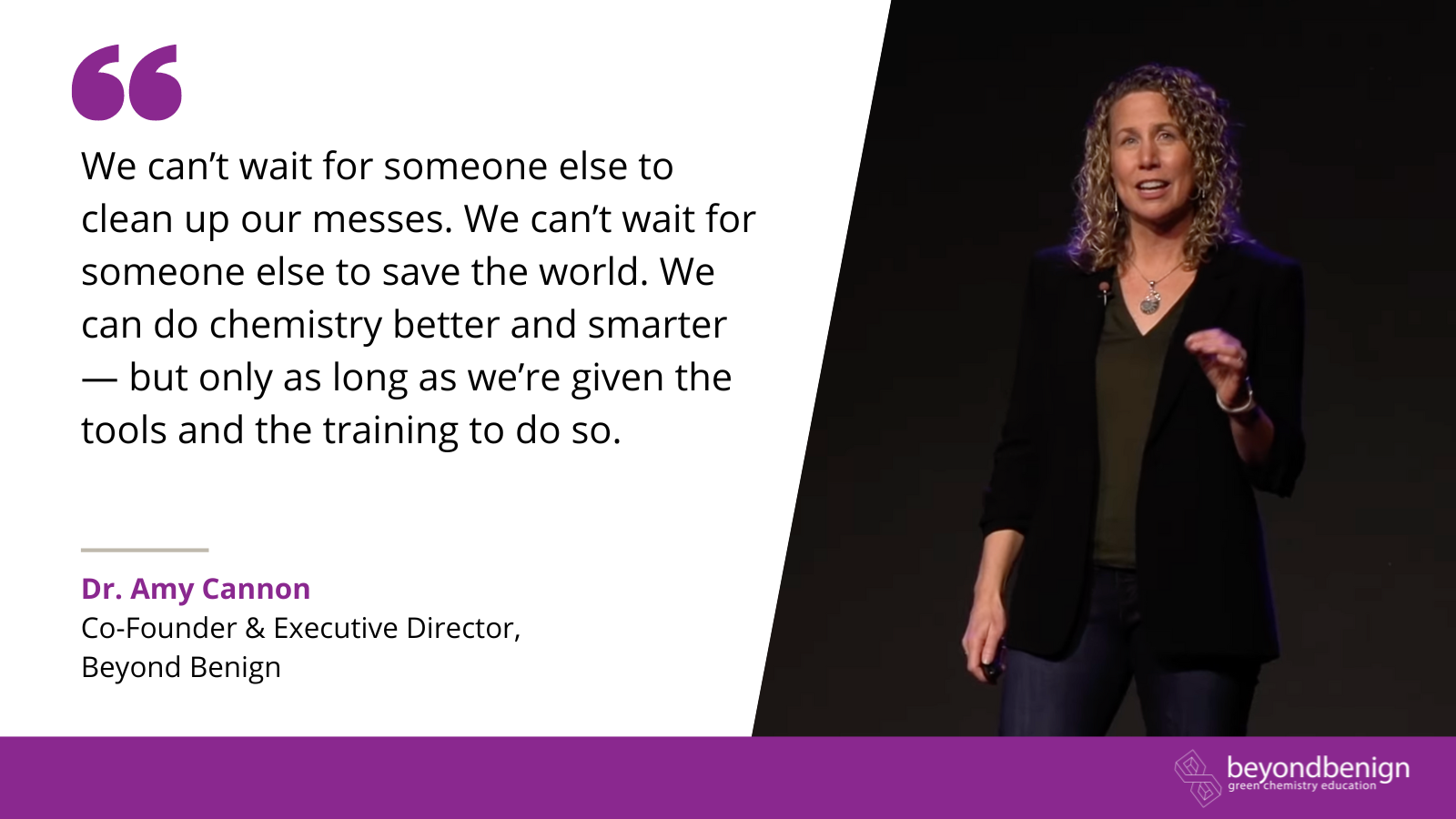
The Promise of Green Chemistry: A TEDx Talk by Dr. Amy Cannon
February 16, 2024
In her TEDx Talk, “The Promise of Green Chemistry,” Beyond Benign Co-Founder and Executive Director Dr. Amy Cannon inspires calls for a paradigm shift in chemistry education to focus on […]
Categories: Green Chemistry Education
Green Chemistry Education Challenge Awards: Announcing the 2023-24 Grant Winners!
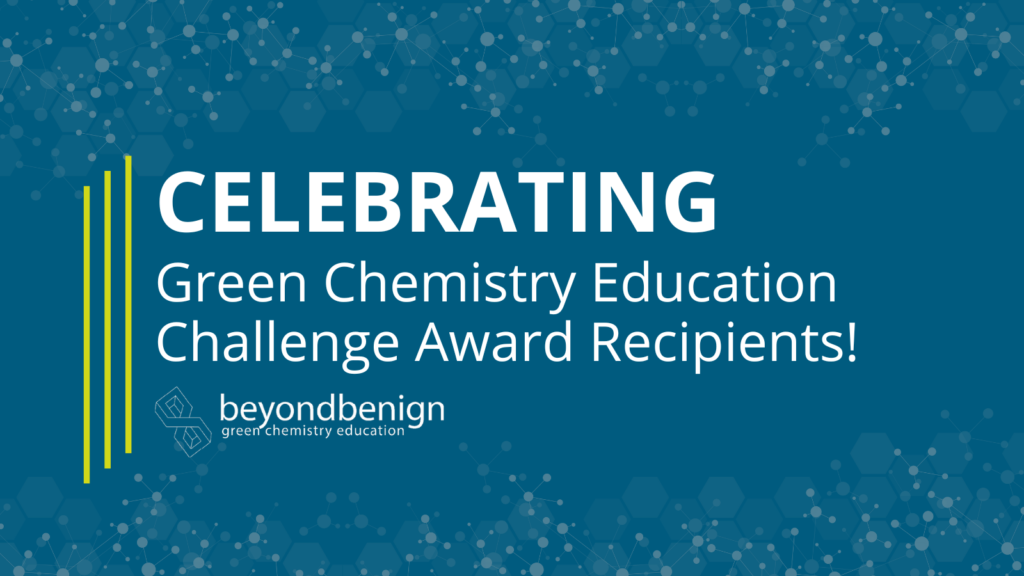
At Beyond Benign, we aim to empower educators to transform chemistry education for a sustainable future. To further this mission, we partner with industry to provide funding for educators and students to accelerate the adoption of green chemistry on higher education campuses worldwide. In December 2023, Beyond Benign selected 13 Green Chemistry Education Challenge Award winners and distributed $80,000 to university partners around the world through the Green Chemistry Commitment (GCC) program.
The Green Chemistry Education Challenge Awards provide financial support for the integration of green chemistry education into courses and curricula. Award winners receive funding to support work to:
- Increase the awareness of green chemistry and the GCC program across the chemistry department and institution.
- Increase awareness of the institution’s dedication to green chemistry education through conference attendance, webinars, publications, social media campaigns, and other opportunities.
- Transform curriculum and lab procedures to achieve the GCC’s Green Chemistry Student Learning Objectives. The objectives aim to provide all chemistry graduates with proficiency in essential green chemistry competencies of Theory, Toxicology, Application, and Laboratory skills.
A new round of Green Chemistry Education Challenge Awards will be open soon. Keep an eye on our awards page to learn more, and subscribe to our newsletter for updates!
Minority Serving Institute (MSI) Education Challenge Awards
In support of our Minority Serving Institute initiative, we distributed three (3) awards of $10,000 USD each for GCC Signer Minority Serving Institutions (MSIs) to accomplish projects that advance the teaching and learning of green chemistry. The following proposals were awarded grants for the 2023-2024 academic year.
California State University, San Marcos
Award Lead: Robert Iafe
Proposal: The Department of Chemistry & Biochemistry will be establishing a new Green Chemistry minor starting September 2025. To achieve this goal, two courses will be developed: a Green Chemistry course, and a Toxicology course, using open-access curricular resources from Beyond Benign. Specific student learning objectives and course content will be adapted to suit a majority Hispanic/Latinx student population in collaboration with the LatinX Center on campus. In collaboration with Institutional Planning and Analysis and other campus partners, qualitative and quantitative data will be collected from all chemistry and biochemistry majors, and assessed to evaluate student success, persistence, and self-efficacy in the university. Finally, California State University, San Marcos will host a public university-wide seminar on green chemistry. The goal of the seminar is to increase retention of students in chemistry research by exposing them to cutting edge green chemistry research.
 Pontifical Catholic University of Puerto Rico
Pontifical Catholic University of Puerto Rico
Award Lead: Adalgisa Batista-Parra
Proposal: The Pontifical Catholic University of Puerto Rico will redesign the curriculum for their organic chemistry laboratory courses to integrate green chemistry principles. Curriculum materials will reflect current and emerging trends in green chemistry and sustainable chemistry education. Greener synthetic routes for current laboratory experiments, where the use of safer solvents and reagents will be prioritized. Selected greener synthetic routes will be tested in a pilot group before their implementation throughout the undergraduate laboratory courses. Data will be collected on the amount of chemical waste disposal, the amount of solvent usage, and the financial impacts of implementing safer solvents and reagents; and will be compiled into a comprehensive report shared with the Pontifical Catholic University of Puerto Rico’s stakeholders, including faculty, students, and the university administration. Ultimately, the course redesign will enhance student learning experiences and promote green chemistry awareness and knowledge and sustainable practices across the department.
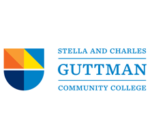
Stella and Charles Guttman Community College (CUNY)
Award Lead: Jihyun Kim
Proposal: Stella and Charles Guttman Community College, CUNY will redesign their organic chemistry laboratory I and II courses to incorporate microscale glassware kits and additional green chemistry practices for implementation during the September 2024 to May 2025 semesters. Ten new modules will be incorporated into the organic chemistry laboratory curricula, incorporating the use of new microscale glassware kits. Beyond Benign and the green chemistry community will be introduced to students and an overview of the 12 Principles of Green Chemistry and their application in organic chemistry will be provided. Throughout the course, students will discuss the importance of sustainability, environmental impact, and responsible practices in organic chemistry. Microscale apparatus kits will be introduced alongside traditional synthesis kits to help students better understand the purpose of employing microscale kits and its benefits and challenges. Success and progress will be measured by using assessment methods to evaluate student understanding of green chemistry concepts and their ability to apply them in organic chemistry laboratory settings.
MilliporeSigma Green Chemistry Education Challenge Awards
Thanks to support from MilliporeSigma, the Life Science business of Merck KGaA, Darmstadt Germany, ten (10) awards of $5,000 USD each are available for GCC Signer Institutions to drive awareness or support the adoption of green chemistry into courses, laboratories, and/or outreach activities. We awarded the following ten proposals grants for 2023-2024:
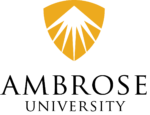 Ambrose University
Ambrose University
Award Lead: Kristian Caldo
Proposal: Ambrose University will introduce undergraduate biochemistry laboratory students to green chemistry principles by applying biochemical techniques in converting agricultural feedstock into value-added byproducts. Specifically, an efficient and sustainable process for extracting proteins from canola meal will be developed for implementation in an undergraduate biochemistry laboratory course. Through this experiment, students will discuss how using agricultural by-products in this way is crucial in meeting the future demand for plant-based protein sources. This project will also expose students to circular economy principles in reducing the environmental impact of farming and food production by converting agricultural waste into useful protein products.
![]()
City University of Hong Kong
Award Lead: Carol Lin
Proposal: City University of Hong Kong will implement an assignment in an undergraduate course for environmental engineering students to fully understand the concept of Life Cycle Assessment (LCA) and green chemistry. The product system studied is the production of crude sophorolipids (i.e. biosurfactant, commonly used as an ingredient of cleaning agent) using food waste and soybean oil as substrate. The environmental impacts/burdens associated with the production of sophorolipids using waste stream substrate food waste instead of first-generation substrate glucose are analyzed based on Life Cycle Assessment (LCA) approach using the SIMAPRO software. The environmental analysis includes all the processes related to the collection and treatment of food waste till the fermentation of crude sophorolipids. Through this assignment, students will develop a deeper understanding of the environmental implications of chemical processes and products and will additionally serve as motivation for exploring the principles of green chemistry.
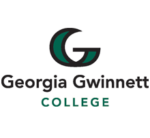 Georgia Gwinnett College
Georgia Gwinnett College
Award Lead: Jennifer Hendrickson and Cynthia Woodbridge
Proposal: The Green Chemistry Task Force and the chemistry faculty at Georgia Gwinnett College will create a green chemistry course, including tracks for majors and a minor. To achieve this, first, a series of twelve events will be run over one year to build awareness on campus and with community collaborators. Each monthly session will focus on a Green Chemistry Principle and will include a lecture from a guest speaker and activities to support learning around the Principle. The sessions will build awareness for students in green chemistry by creating interactive avenues to explore green chemistry. Additionally, faculty will be provided with professional development opportunities to create a green chemistry curriculum using activities to enhance their own learning as well as student learning. Finally, collaborations with internal programs of students and external businesses will be created.
 Harrisburg University of Science and Technology
Harrisburg University of Science and Technology
Award Lead: Yiben Wang
Proposal: Harrisburg University of Science and Technology will host two collaborative professional development workshops in July/August 2024 for local high school teachers partnered with the university through the College in High School program. Teachers will be trained in demonstrating and facilitating greener laboratory experiments by faculty and two undergraduate students from the Department of Chemistry. This project will foster and accelerate the growth of green chemistry at Harrisburg University and its partner high school institutions.
 McGill University
McGill University
Award Lead: Julian Marlyn and Green Chemistry McGill student group
Proposal: The Green Chemistry McGill Student Group at McGill University will implement three projects to implement actionable changes within research and teaching labs, strengthen community awareness and involvement with green chemistry, and enrich departmental communal spaces. First, an acetone recycling pilot program will be implemented, designed to reduce waste from teaching laboratories. Monthly green chemistry coffee hour talks will connect the green chemistry community within the department. Finally, the Green Chemistry McGill Awareness Day – a one-day green chemistry conference open to the local campus and community – will be hosted. These projects will improve the green chemistry community, resources, and discussion within the Department of Chemistry at McGill, while additionally strengthening the inclusion of sustainability research practices.
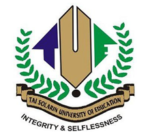 Tai Solarin University of Education
Tai Solarin University of Education
Award Lead: Oyesolape Basirat Akinsipo nee Oyelaja and Oluwaseun Anselm
Proposal: The Tai Solarin University of Education will organize and host a five-day virtual green chemistry program for institutions across Nigeria to create a platform for inter-institutional discussions and to hold an inter-university competition. The program will include panel discussions with green chemistry advocate faculty members from different institutions across the country to share the successes and challenges of green chemistry practices in their institutions and the sustainability of its incorporation throughout curricula. Students will be invited to participate in an inter-institutional competition, while showcasing their green chemistry research and outreach projects. This highly collaborative event will ultimately lead to a richer integration of green chemistry in curricula across institutions in Nigeria.
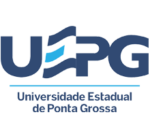 Universidade Estadual de Ponta Grossa
Universidade Estadual de Ponta Grossa
Award Lead: Marilei Casturina Mendes Sandri
Proposal: Universidade Estadual de Ponta Grossa (UEPG) will redesign its organic chemistry laboratory course to include Green Chemistry Principles and practices. Experiments will be modified to make use of and address green chemistry metrics, safer solvents and reagents, energy and resource conservation, and waste reduction. The organic chemistry laboratory’s physical spaces will also be improved to accommodate safer lab practices. This course redesign will contribute to increasing the green chemistry culture and adoption at UEPG amongst the faculty and will ultimately help foster the inclusion of green chemistry content across the chemistry courses.
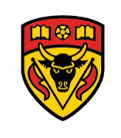 University of Calgary
University of Calgary
Award Lead: Ashley Scott Causton
Proposal: The University of Calgary will implement green chemistry principles and practices throughout its undergraduate chemistry curriculum. They will accomplish this by revitalizing their green chemistry course that has not been offered since 2015, and by reviewing downstream courses to include green chemistry knowledge and skills learned in the independent course. The green chemistry course will be redesigned to include high-impact learning activities and content material focusing on green chemistry principles. Feedback will be collected from students taking the course to understand how downstream courses, including laboratory courses, can be improved to include green chemistry content. The green chemistry course will be offered to students from other programs such as biology, medicine, natural sciences, and engineering for universal green chemistry adoption.
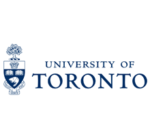 University of Toronto
University of Toronto
Award Lead: Alicia Battaglia and the Green Chemistry Initiative student group
Proposal: The Green Chemistry Initiative at the University of Toronto will facilitate a workshop for graduate students in March 2024 in collaboration with Beyond Benign and will support graduate students’ green chemistry professional development at their annual Symposium in May 2024 with these award funds. This new workshop and the annual Symposium will increase the awareness of green chemistry across the chemistry department and related faculties at the University of Toronto as well as other universities across Canada and the United States.
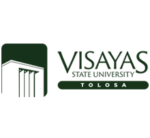 Visayas State University Tolosa
Visayas State University Tolosa
Award Lead: Jerald Villarmino
Proposal: Visayas State University Tolosa will implement and include green chemistry content, principles, and materials across all chemistry lectures and laboratory courses. A comprehensive redesign of the courses will be completed collaboratively across the department, including the implementation of new equipment in the teaching laboratories to foster safety and green lab practices. Undergraduate students will be enabled and empowered to apply green chemistry skills and knowledge outside of their educational courses. Ultimately, this comprehensive integration of green chemistry content will help to create a culture of awareness at Visayas State University Tolosa, and throughout institutions in the Philippines.

Green Chemistry Education Challenge Awards: Announcing the 2023-24 Grant Winners!
January 24, 2024
At Beyond Benign, we aim to empower educators to transform chemistry education for a sustainable future. To further this mission, we partner with industry to provide funding for educators […]
Categories: Green Chemistry Education, Higher-Ed
Inorganic Chemistry’s Green Future: A Q&A with John De Backere

Meet John De Backere, an Assistant Professor who is championing green chemistry education at the University of Toronto (a Green Chemistry Commitment signer) and in the greater green chemistry community.
John has been active in integrating green chemistry principles and practices into the Department of Chemistry’s inorganic chemistry courses and connected with Beyond Benign in 2020 through our Faculty Fellowship Program. He is now a peer reviewer and moderator in the Green Chemistry Teaching and Learning Community (GCTLC) — an online platform where the green chemistry community can connect and share resources.
We caught up with John to learn more about his green chemistry journey and get the latest updates on his work in green inorganic chemistry. In this conversation, John shares how he’s seen students engage with green chemistry, his hopes for the future of green chemistry education, and so much more.
Please share a little about your background and involvement with Beyond Benign and the broader green chemistry community.
Among my teaching responsibilities for the Department of Chemistry is coordinating the laboratory components of our second- and third-year inorganic chemistry courses, which is where I’ve primarily worked on incorporating green chemistry principles and practices. I first connected with Beyond Benign in 2020 through its Faculty Fellowship program, which aimed to develop greener laboratory exercises for undergraduate teaching labs. Through this and other opportunities, I’ve been privileged to connect and collaborate with many amazing members of the green chemistry community. I’m especially excited to continue to develop these relationships and interactions through the new online GCTLC, where I’ll be active as a learning object peer reviewer and forum/groups moderator!
Tell us more about your green chemistry journey — what led to your interest in the field?
My green chemistry journey largely began when I first joined the University of Toronto as a faculty member in 2019, where I attended a yearly green chemistry symposium organized and run by our passionate student-run organization, the Green Chemistry Initiative. The principles and practices that were discussed deeply resonated with me, coming from a research background working with extraordinarily hazardous and toxic reagents, and it acted as the catalyst for me to continue learning and integrating green chemistry into my teaching. I’m also extremely fortunate to be surrounded and supported by enthusiastic colleagues who are among the many champions of the green chemistry community and have helped further nurture my interests and efforts in this space.
What does your work in green inorganic chemistry involve? What makes it unique from green organic chemistry?
My work in the higher ed green chemistry space so far has largely focused on the curricular development of greener inorganic teaching experiments. This includes modifying our old experiments to align with and include green chemistry principles, replacing older labs with greener ones from the chemical education literature, and developing brand-new teaching experiments centered around green chemistry. Through my relationship with Beyond Benign, my work has grown from isolated efforts within my courses into international collaborations with faculty across North America (and hopefully beyond in the future). The unique aspect of incorporating green chemistry into the inorganic curricula is the state of infancy to its adoption relative to other areas like organic. This originally presented some challenges, such as difficulties finding resources or examples to use as someone new to green chemistry.
Since signing the Green Chemistry Commitment (GCC) in 2016, how has the University of Toronto fostered green chemistry education?
Our faculty at the University of Toronto have formed a great partnership with Beyond Benign since signing the GCC in 2016. This has resulted in our contribution to a variety of international green chemistry education initiatives, including co-organizing conference symposia and workshops, leadership in the GCTLC and Green & Sustainable Chemistry Education Module Development projects, developing greener laboratory guides and resources for the Toxicology for Chemists Program, and much more. It’s atypical not to see at least one of my colleagues involved in a project that fosters green chemistry education!
What advice or resources would you share with faculty from other institutions who may be facing barriers or who lack institutional support?
If you’re facing challenges with integrating green chemistry into your teaching, there is an unbelievable amount of support available from the green chemistry community. It’s undoubtedly one of the most enthusiastic, passionate, and supportive groups of individuals I’ve encountered. Don’t be afraid to reach out to colleagues active in the space for support. This is now easier than ever with the recent launch of the GCTLC, where forums, groups, and profiles are available to connect and collaborate with others working in this area!
How have you seen your students actively engage in the discussion on green chemistry in your classes and beyond?
Our students are very engaged and excited about green chemistry. Out of all the inorganic teaching experiments, it’s evident that the “green-centric” labs in the curriculum are typically the students’ favorites. I think students are now very aware of the environmental and health challenges we face in the world, so equipping them with green chemistry as a professional tool to make a difference is very empowering. Beyond the classroom, I’ve had a few full circle moments when an undergraduate student I’ve taught green chemistry principles becomes active in the student-run Green Chemistry Initiative, since this organization originally introduced me to green chemistry to begin with!
What elements of the GCTLC are you most excited about? How do you think the GCTLC will support the advancement of green chemistry?
I truly believe the GCTLC is a game changer when it comes to connecting and sharing resources within the green chemistry community. When I first entered the green chemistry space, it was a challenge to find aligned resources with my area and hard to connect with individuals who shared similar interests or were working on related projects (beyond the traditional approaches of connecting at conferences or finding them from the literature). The GCTLC is a much more accessible and organized platform, and I’m excited about the ability to quickly search profiles of individuals, easily connect with people, and share content in a more informal and open-access way. I think these two aspects will really support collaboration, which in turn will advance green chemistry education in an impactful way.
Can you share a couple of resources you recommend in green inorganic chemistry?
Although we’re just at the beginning of broadly integrating green chemistry into the inorganic curricula, there are certainly some resources available — with much more to come! As a starting point, we’ve compiled a curated collection of a few “Greener Inorganic Labs” on the GCTLC. I expect this collection to grow exponentially in the coming months and years as this online community continues to expand.
Outside of your work, what are some of your favorite hobbies or activities?
I love escaping from the city to connect with nature; anything from taking my dog (he’s a black “Whoodle” which is a mix between a Wheaten Terrier and Poodle) on local hikes through forests up to more ambitious adventures in Yosemite National Park or back-country canoe camping in Algonquin Provincial Park. I also enjoy doing the majority of cooking in my household, which includes making a mean carbonara and delicious slow-cooked ribs (I have yet to tweet my culinary adventures on #ChemistsWhoCook).
What is your hope for the future of green chemistry education?
My hope for the future of chemistry education is a transformation where green chemistry becomes amalgamated as a best practice and foundational knowledge of all chemists. I think the future is quickly approaching thanks to efforts from organizations like Beyond Benign, with recent milestones like ACS-approved Bachelor’s degree programs requiring curriculum that provides students with a working knowledge of the 12 Principles of Green Chemistry.
Keep up with John and his work by connecting with him in the GCTLC!

Inorganic Chemistry’s Green Future: A Q&A with John De Backere
January 24, 2024
Meet John De Backere, an Assistant Professor who is championing green chemistry education at the University of Toronto (a Green Chemistry Commitment signer) and in the greater green chemistry […]
Categories: GCTLC, Green Chemistry Education, Higher-Ed
The Impact of Green Chemistry in Elementary Education: A Conversation with Veronica Morabito Weeks
 Veronica Morabito Weeks, a passionate fifth-grade educator with 28 years of teaching expertise in Long Island, New York, emphasizes that while green chemistry is commonly associated with environmental sciences in elementary classrooms, she has successfully integrated its principles across various subjects such as ELA, economics, civics, and even within discussions about food. “Being an elementary teacher, I don’t just do science. I do everything!” Veronica says. “I stick science in everywhere.”
Veronica Morabito Weeks, a passionate fifth-grade educator with 28 years of teaching expertise in Long Island, New York, emphasizes that while green chemistry is commonly associated with environmental sciences in elementary classrooms, she has successfully integrated its principles across various subjects such as ELA, economics, civics, and even within discussions about food. “Being an elementary teacher, I don’t just do science. I do everything!” Veronica says. “I stick science in everywhere.”
Through innovative lessons based on situations and settings familiar to her students, Veronica utilizes the environment as a gateway to comprehending green chemistry, ensuring that learning remains engaging and enjoyable.
A Call to Action Through Chemistry
Through engaging projects that relate to the world around them, Veronica’s students have had the opportunity to think about the environment they want to live in and brainstorm innovative ways to bring about change.
One of her classroom projects centered around a particulate matter device called the flow device, which detected poor air quality in their classroom, located near the Long Island Expressway and an industrial park. Concerned about their breathing difficulties and prevalent asthma, especially following the end of the COVID era when chemicals were used for sanitation, the students initiated investigations using the flow device. They observed how cleaning chemicals triggered the device and noticed spikes during high traffic times, like lunch breaks.
Motivated by their findings, the students brainstormed solutions. They explored biomimicry, particularly the Sharklet Biomimicry, aiming to create non-toxic sanitizers for their desks. Additionally, they proposed designing barriers along the expressway using materials like cork that could absorb toxins, presenting these innovative ideas at a virtual symposium.
“They played around with green chemistry and how they could make their own disinfectants,” Veronica says. “That was another favorite. They used the Think Dirty app to look at different products and how toxic they are. And it was shocking.”
Veronica described another impactful classroom project centered around exploring plastics, inspired by Beyond Benign’s Plastics labs. Students engaged in creating plastics from benign household items, testing these materials to ensure they possessed desired characteristics. Taking their learning further, they linked their knowledge to real-world issues. They learned about a New York City bill in the Senate aimed at reducing plastic bags and eliminating single-use items like shampoos in hotels.
“These fifth-grade kids went wild!” Veronica says. “They wrote letters and sent them to Albany to our local Senator, Monica Martinez. She came into the classroom, and she was so thrilled. She said, ‘You kids have to come to Albany and present this!’”
The bill passed, leading to a victorious moment for the students. This experience not only connected science with civic engagement but also highlighted the intersection between economics and the environment. Veronica emphasized the importance of providing solutions rather than simply raising concerns and encouraged her students to offer alternatives while advocating for change.
“I tell them it’s not enough to just say, ‘You can’t have bug spray because it’s toxic,’ and to then use nothing at all,” Veronica says. “You have to change it — make it so we can have it, but it’s not going to kill us. That’s what we try to get across. We’re always going to have plastic, but let’s make the plastic better and biodegradable. And not create so much of it.”
Exploring Green Chemistry Through Real-Life Food Experiences
Veronica has discovered that igniting her students’ enthusiasm for green chemistry requires tapping into real-life experiences and interests, a principle that was especially evident in her teachings revolving around food. In one example, upon discovering the toxins in popular energy drinks, her fifth graders sought to create healthier alternatives without compromising taste or quality.
Through engaging units like the Plate to Planet program, created in collaboration by Impossible Foods, Beyond Benign, and Veronica, students explored alternatives to food waste in the cafeteria and alternatives to meat consumption. “They couldn’t believe how much was being thrown out!” The Plate to Planet “Science of Food” unit connected to different subjects and actions. Students investigated the components of common food items and experimented with creating natural food dyes. Their goal was to substitute artificial dyes with more sustainable and healthier options, balancing functionality, taste, and color stability.
We started an outside compost and vegetable garden outside our classroom (economics/biology). They wrote and petitioned our cafeteria to have Impossible Burgers so they would have choices that are more sustainable (civics/food science/sustainability). Some students even worked with their parents to reduce their meat intake after learning more about environmentally friendly options
“We share that when you change a product to something more ‘green,’ it still has to function well,” Veronica says. “It still has to taste good. It has to hold its color. For example, we were making frosting, and we wanted it to be red. So we tried strawberries. We tried a variety of different things because we wanted to see if the flavor would change. They found something they really liked, and they wanted the recipe for their parents.”
Having hands-on experience with changing the world around them through chemistry has been impactful for her students. “You can see how much of our green chemistry approach at this level is connected to the environment, and kids are learning how much agency they have to make a difference in their world,” Veronica says. “They learn it is very possible to influence their surroundings through their understanding of science. We don’t have labs where we are using a lot of intense chemicals, so we had to find a way for kids to connect.”
Cornell Collaboration: Unveiling Vaping’s Impact on Cells and the Environment
Veronica’s students’ deep engagement with chemistry has gotten a big boost through her close collaboration with Cornell University’s impactful programs, particularly the Cornell ASSET (Advancing Secondary Science Education through Tetrahymena) Program from the College of Veterinary Medicine, Department of Microbiology and Immunology. While primarily tailored for high school levels, Veronica adapted two of their kits for elementary students, infusing them with green chemistry principles.
One of these kits, the Chemotaxis Kit, explores chemical reactions using Tetrahymena, microscopic organisms found in ponds. Veronica’s students utilize Tetrahymena to investigate the effects of vaping chemicals on cells, drawing parallels between Tetrahymena and human respiratory cells.
“We are hoping that it stops them from vaping because that’s a huge problem out here,” Veronica says. “They see clearly what happens to the cells. They explode. And the kids are horrified, saying, ‘Oh my God! I’m never gonna do it, I promise you!’”
Cornell provides microscopes and vaping extracts for the experiments. Veronica emphasizes the broader environmental consequences, discussing how vaping toxins might affect waterways, thereby nurturing a sense of responsibility toward environmental stewardship among her students.
“They are developing agency to do something about it, for themselves, for their families, and for the immediate environment around them, teaching them that they have the power to impact change,” she says.
Part of Everything
Veronica emphasizes that when green chemistry is approached as a component throughout her curriculum rather than a siloed subject, it becomes more accessible to students and educators.
“We try to make our approach simple so we can share with other teachers,” she says. “Sometimes elementary teachers are intimidated by chemistry because they don’t feel like they are trained enough or it is too hard. I share that it is more simple than they believe. I am not a chemistry person, but I have always loved it, and I’ve taught myself. I find that chemistry is part of everything: your food, your products, your water. I try to help others to not be afraid of it, little by little.”
As a Beyond Benign Lead Teacher, Veronica is doing this work through her engagement in the Observe, Wonder, Think Webinar series. In November 2023, Veronica shared her biomimicry resources with a diverse audience of educators ranging from K-12 teachers to Higher Education faculty members. At Observe, Wonder, Think webinars, educators are able to come together for fruitful and enriching conversations that help them bring green chemistry into classrooms across the country, and the world. To learn from and connect with educators like Veronica, interested community members can join us, monthly, by registering here. To hear Veronica’s presentation on Biomimicry, visit the YouTube video, linked here.
To connect with Veronica and hear more about her work, find her on the Green Chemistry Teaching and Learning Community.

The Impact of Green Chemistry in Elementary Education: A Conversation with Veronica Morabito Weeks
December 11, 2023
Veronica Morabito Weeks, a passionate fifth-grade educator with 28 years of teaching expertise in Long Island, New York, emphasizes that while green chemistry is commonly associated with environmental sciences in […]
Categories: Green Chemistry Education, K-12
2023 Year in Review
Check out our takeaways from an incredible year in the green chemistry community.


2023 Year in Review
December 7, 2023
Check out our takeaways from an incredible year in the green chemistry community.
Categories: GCTLC, Green Chemistry Education, Higher-Ed, K-12
Conferencing and Community: A Seasonal Recap
What does it mean to build—and exist in—a global community, despite thousands of miles and hours of time difference?
As our global green chemistry community continues to grow, we at Beyond Benign find ourselves asking these two critical questions time and time again. This is why you may have seen us– virtually or in person– at any one of the many green chemistry conferences, webinars, seminars, or ceremonies 2023 had to offer.
In traveling, logging on, presenting, or listening in, we are hoping to reach you – our brilliant community members at the forefront of change in the green chemistry space. We know from experience that innovation and creation happen when we connect, collaborate, and show up for one another.
So, where did we show up recently? Explore highlights from this season’s travels below!
National Organization for the Professional Advancement of Black Chemists and Chemical Engineers (NOBCChE) 50th Anniversary

In September of this year, Beyond Benign Higher Education Program Manager, Dr. Nimrat Obhi (they/them), attended the 50th Annual Meeting of the National Organization for the Professional Advancement of Black Chemists and Chemical Engineers (NOBCChe).
Dr. Obhi oversees Beyond Benign’s MSI initiative, which provides support to Minority Serving Institutions (MSIs) as part of the Green Chemistry Commitment Program. This support includes making available targeted grants for both faculty and student groups at MSIs and providing professional development opportunities for these community members.
At NOBCChe, Dr. Obhi hosted a workshop titled, “Students as Change Agents” geared toward empowering young Black chemists with the resources they need to be changemakers in the green chemistry space. But, in Dr. Obhi’s words, the students already had the key components — passion, and a palpable energy for change.
Dr. Obhi aptly summarized the existential questions faced by their audience saying, “They bear increasing responsibilities based on the world we are left with. That’s why it’s our responsibility to show students they have the power and agency as green chemistry advocates to be leaders of a greener, more just future.”
University of Birmingham Sustainability in Chemistry Conference

Photo Credit: University of Birmingham
Dr. Juliana Vidal (she/her) recently traveled to the University of Birmingham for their Sustainability in Chemistry Conference — the first of its kind hosted by the recent GCC Signer, with plans in place for the conference to become an annual occurrence. Dr. Vidal, a Higher Education Program Manager at Beyond Benign, oversees support for our green chemistry commitment signers, including our growing international community.
“It was amazing to see the symposium at the University of Birmingham becoming a hub for our signers in the UK,” Dr. Vidal shared, “Our Green Chemistry Commitment has become just the domino effect we need to see – such meaningful channels of communication and collaboration opening between our community members.” Organized by Prof. Tomislav Friščić, Prof. Adam Michalchuck, Prof. Deborah Crawford, Dr. Thomas Auvray and Dr. Michael Ferguson, the event included the talks of students and faculty from GCC signing institutions including the University of Birmingham, University of Nottingham, and Texas A&M University.
Youth Forum at ICCM5

Photo Credit: Joshua Gabriel Oluwaseyi
At Beyond Benign, we know that young people are at the forefront of change– and that when given a platform, they make strong advocates for a sustainable future. This is precisely why Dr. Juliana Vidal attended this year’s Youth Forum at the Fifth International Conference on Chemicals Management, hosted by the United Nations Environment Programme in Bonn, Germany.
At this historic forum, a new framework was set forth to improve the management of chemicals and waste, created by its multilateral, multigenerational leadership. Green and sustainable chemistry education was among the demands of leaders and was successfully enshrined in the framework.
A plurality of voices were heard at ICCM5, and Beyond Benign was honored to be among them. Dr. Vidal shared that, “Non-profit organizations like Beyond Benign should have a seat at the table, alongside governments and multilateral organizations, to voice our concerns, share our expertise, and engage our community, to help catalyze change on a more global scale.”
Fostering green chemistry education involves two important ingredients– awareness and accessibility. Knowing about green chemistry is just one piece of the puzzle. This is why the work being done by our Lead Teachers is so important– they are the catalysts inspiring other educators to take their knowledge and to implement it in the classroom.
Eastern STANYS
Education conferences provide an incredible opportunity for us to engage with you all face-to-face, and to demonstrate the practical ways green chemistry fits into your curricula. The Science Teachers Association of New York State (STANYS) hosted its regional conference in Eastern New York, with presentations by Lead Teachers Annette Sebuyira and Stefanie Loomis.
In their workshop, “Using Green Chemistry to Implement NYSSLS Based Labs” Stefanie and Annette called on green chemistry principles, practices, and tools to empower participants toward more sustainable science education. All of this with a spooky twist… These labs were written with an engaging and fun murder-mystery storyline that involved analyzing “poison” lemonade and a potential murder weapon through a density lab.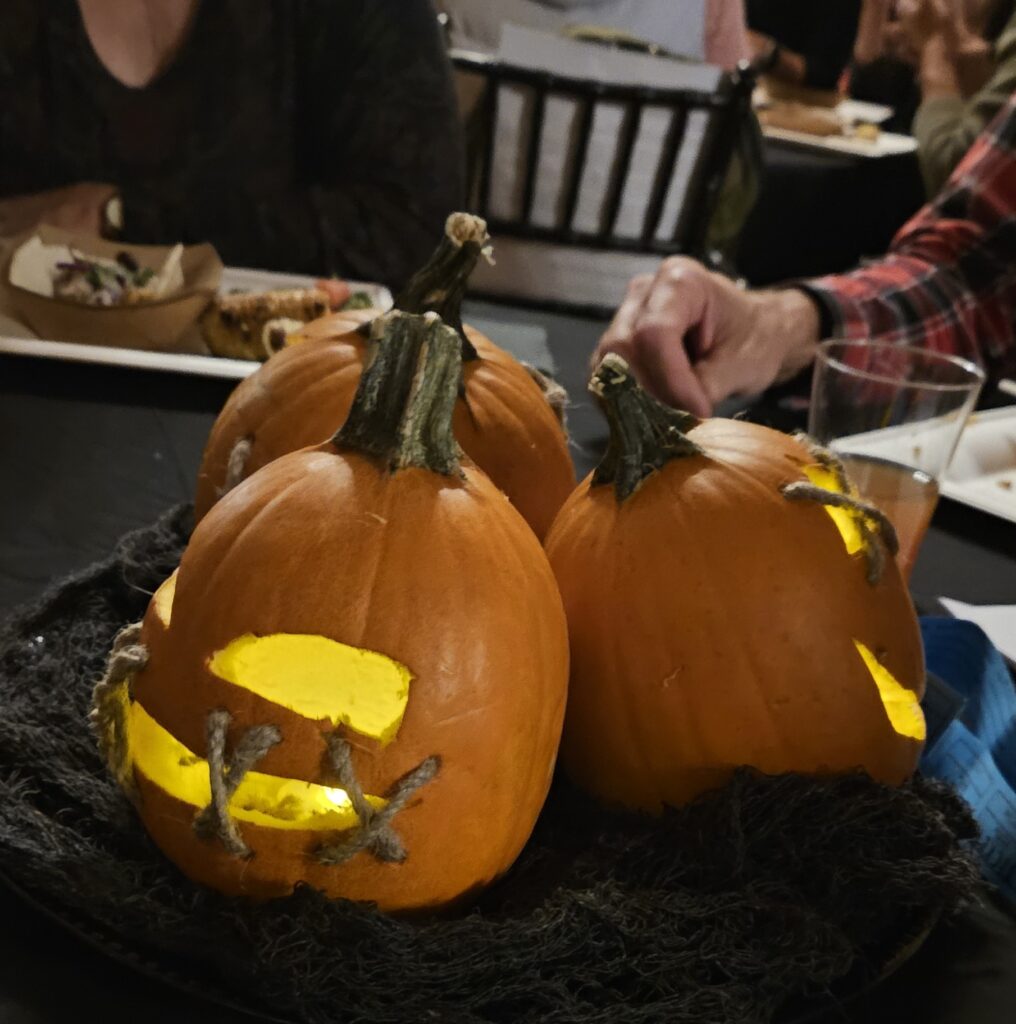
Annette and Stefanie’s creativity shined in this workshop, but the pair remarked that aside from presenting, the highlight was connecting with other passionate and invested science educators from across the region.
STANYS
At the broader STANYS conference a couple of weeks later, our lead teachers represented green chemistry education again with an insightful workshop hosted by Scott Carlson and Stefanie Loomis. With labs to choose from such as flame tests, animal biomimicry, and a density lab, the pair introduced their audience to Beyond Benign, green chemistry, the Green Chemistry Teaching and Learning Community, and more! Stefanie Loomis reflects that, “it is always great to introduce more and more people to green chemistry, and to remind them of all the resources we have made available to them.”
British Columbia Science Teachers’ Conference
In a hybrid presentation titled, “Chemistry Teaching and Learning for Sustainable Futures” Beyond Benign Certified Lead Teacher Ken Hoffman and co-presenter Janice Williams, carried the green chemistry torch at the British Columbia Science Teachers’ Conference. Working specifically with middle school educators, the presenters introduced their audience to the goals and objectives of the 12 Green Chemistry Principles, specifically focusing on Less Hazardous Synthesis, Minimizing Waste, and Atom Economy. Their goal was to have attendees leave with the practical knowledge and skills necessary to inspire the next generation of green chemists.
Ken shares that the event was an incredible success and to his excitement most attendees were familiar with green chemistry, Beyond Benign and the GCTLC. “They were posting the Beyond Benign URL before I could, posting teaching resources in the chat before me, and expressing their interest in the Green Chemistry Teaching and Learning Community…”
Ken shares that the prevailing message of their presentation was, in Janice’s words, “Start where you are!” Sustainability-focused teaching and learning, in many cases, needs only a perspective shift.
Throughout this season, we’ve found that our community is flourishing.
In addition to reflecting on our recent travels, we recently received the exciting results of our annual survey. This year, 74% of educators who responded to this survey said that their confidence to teach green chemistry has increased over 2023! It’s clear that despite the time and distance between us, our community is stronger than ever.
Whether it was online, in person, or a combination of the two, we are so glad to have had the chance to connect with you all – and are excited to see what 2024 has to offer the community we are building, together.
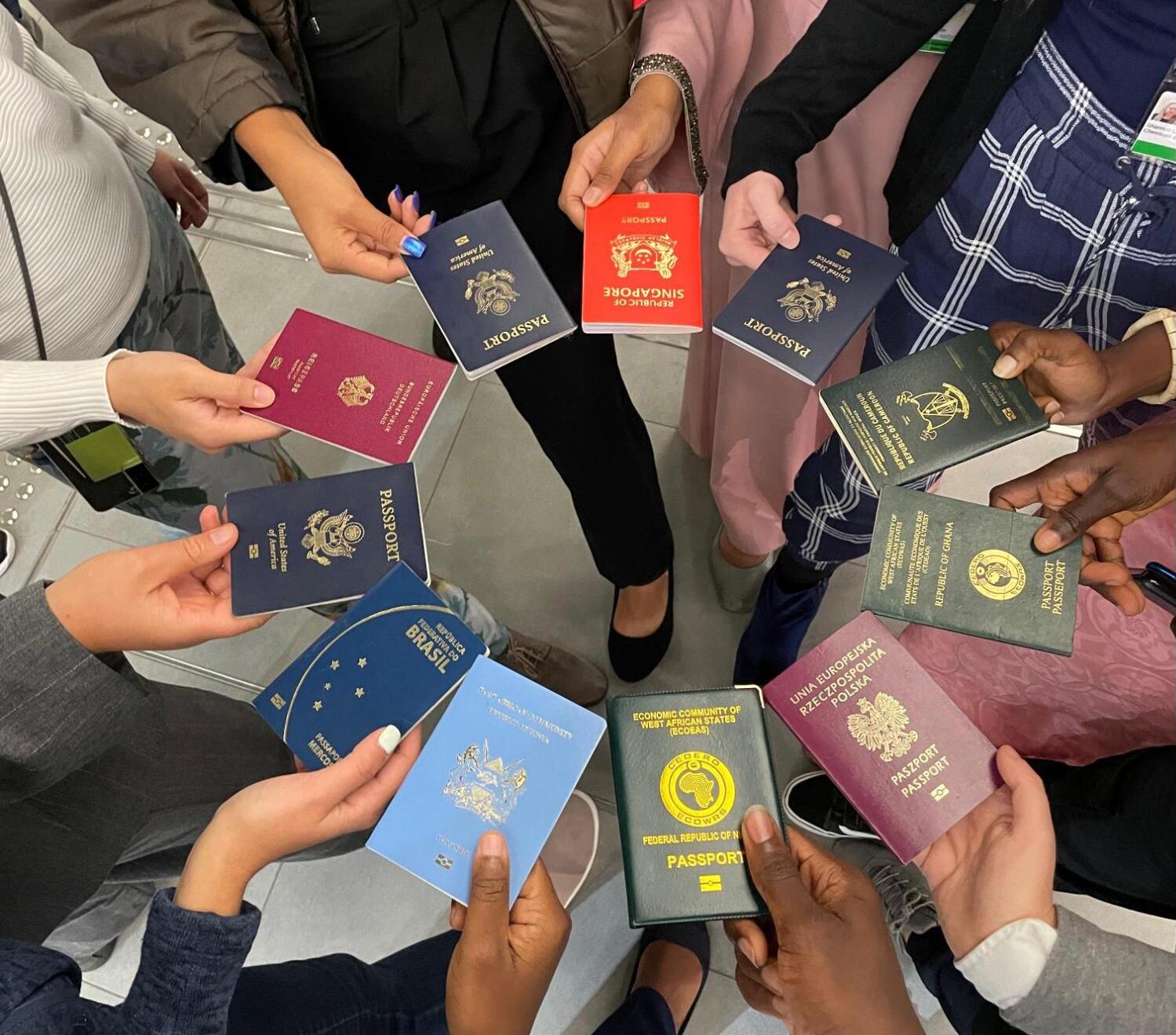
Conferencing and Community: A Seasonal Recap
November 29, 2023
What does it mean to build—and exist in—a global community, despite thousands of miles and hours of time difference? As our global green chemistry community continues to grow, we at […]
Categories: Green Chemistry Education, Higher-Ed
- « Previous Page
- 1
- 2
- 3
- 4
- …
- 15
- Next Page »

